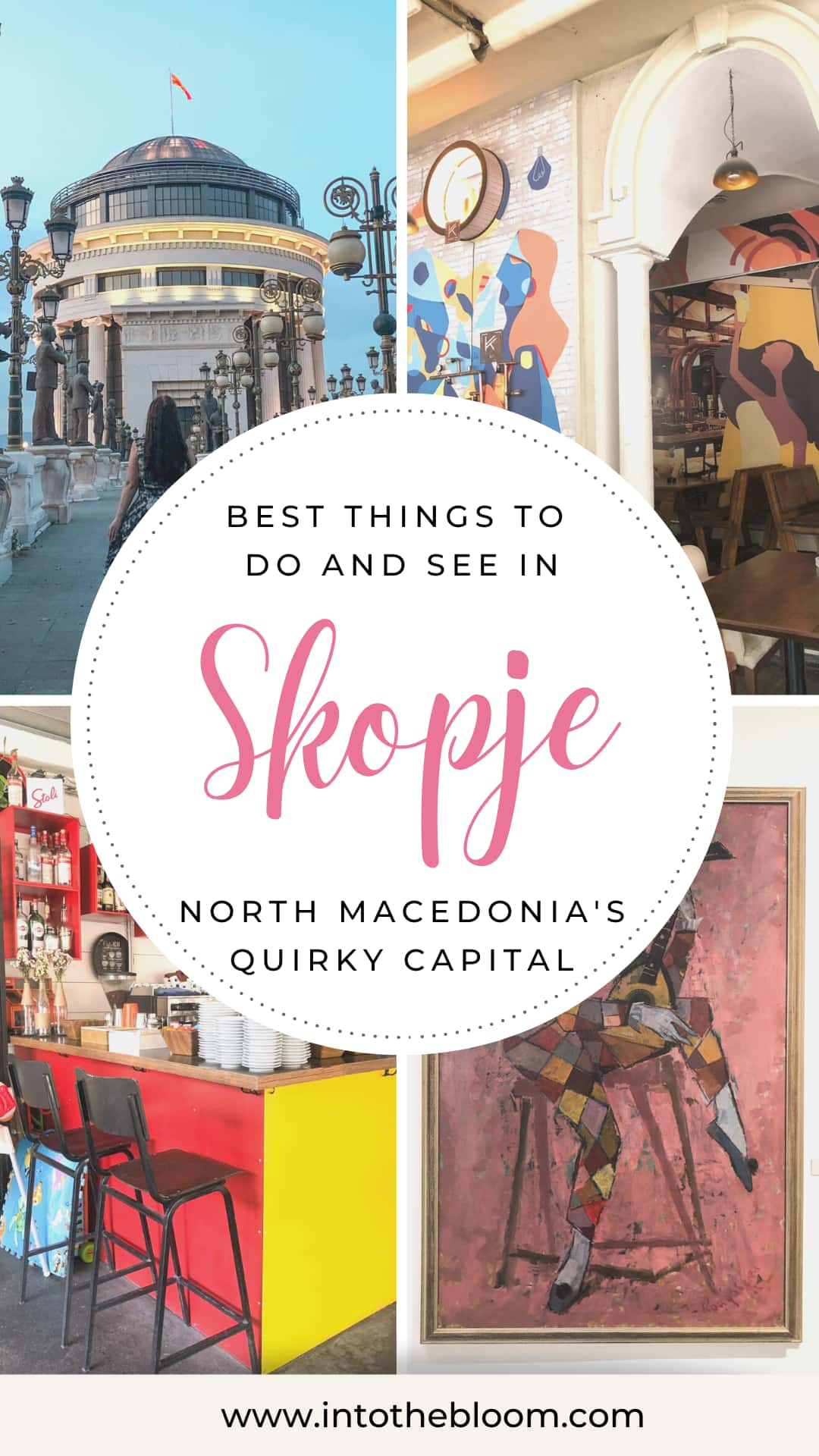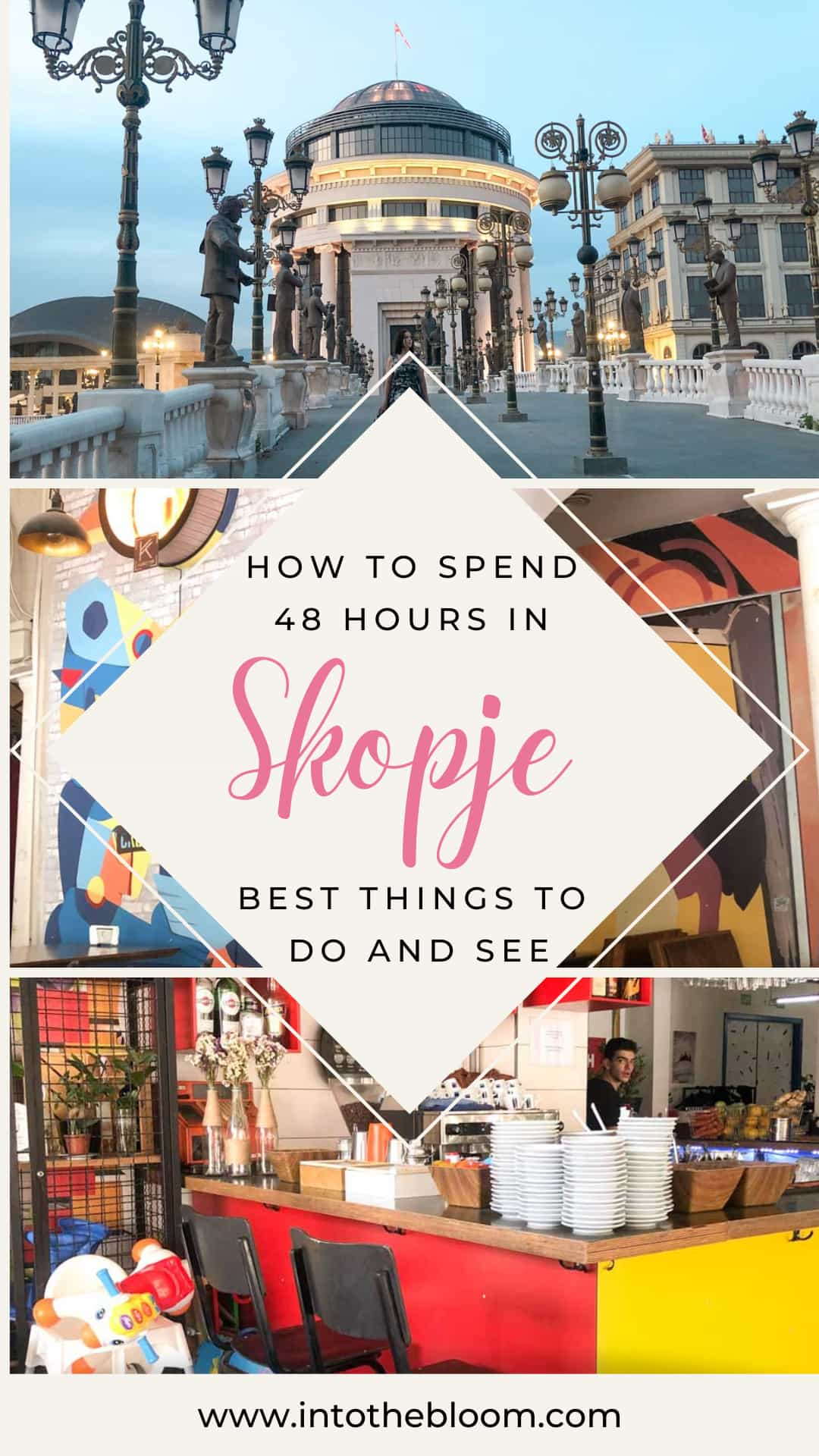Last updated on March 26, 2024
When exploring North Macedonia, most tourists either make a quick pit stop in Skopje on their way to Lake Ohrid, or decide to bypass it entirely. While the capital may not be as vibrant or cosmopolitan as some of its European counterparts, it still holds several surprises for visitors. On our recent trip to the Balkans, we chose to spend 2 nights in Skopje before moving on to the picturesque town of Ohrid for another 4 nights. It was the perfect amount of time to get a feel for the city’s atmosphere and see the main highlights.
In this post, I’ll be sharing the 10 best things to do in Skopje in case you’re considering adding it to your North Macedonia itinerary too.
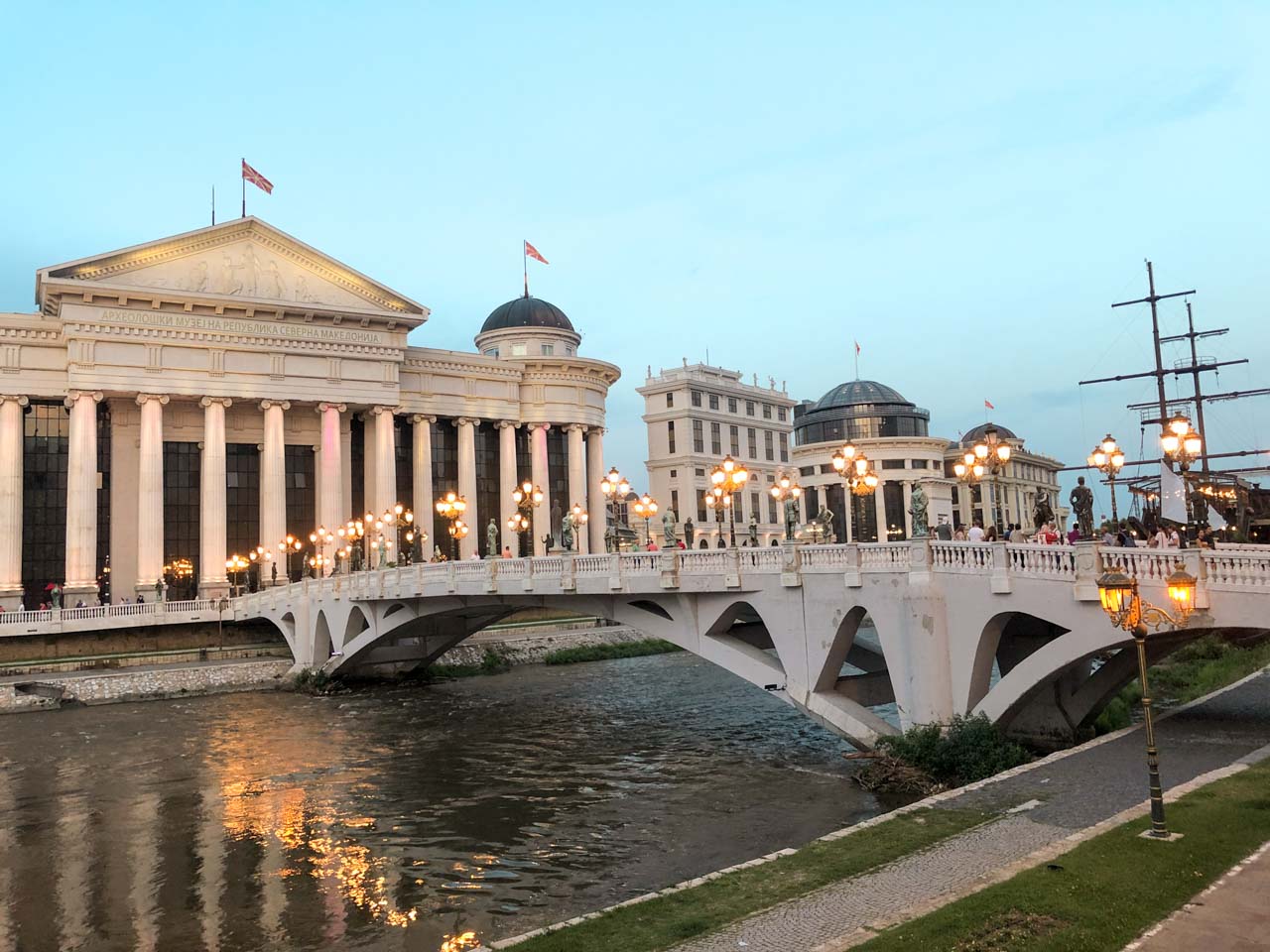
AD – This post contains affiliate links (marked with *) | Read my full disclaimer
Where to stay in Skopje
As this leg of our trip coincided with Mac’s birthday, I decided to book us a nice hotel as a birthday treat. After hours upon hours of extensive research, the winner was the Limak Skopje Luxury Hotel*.

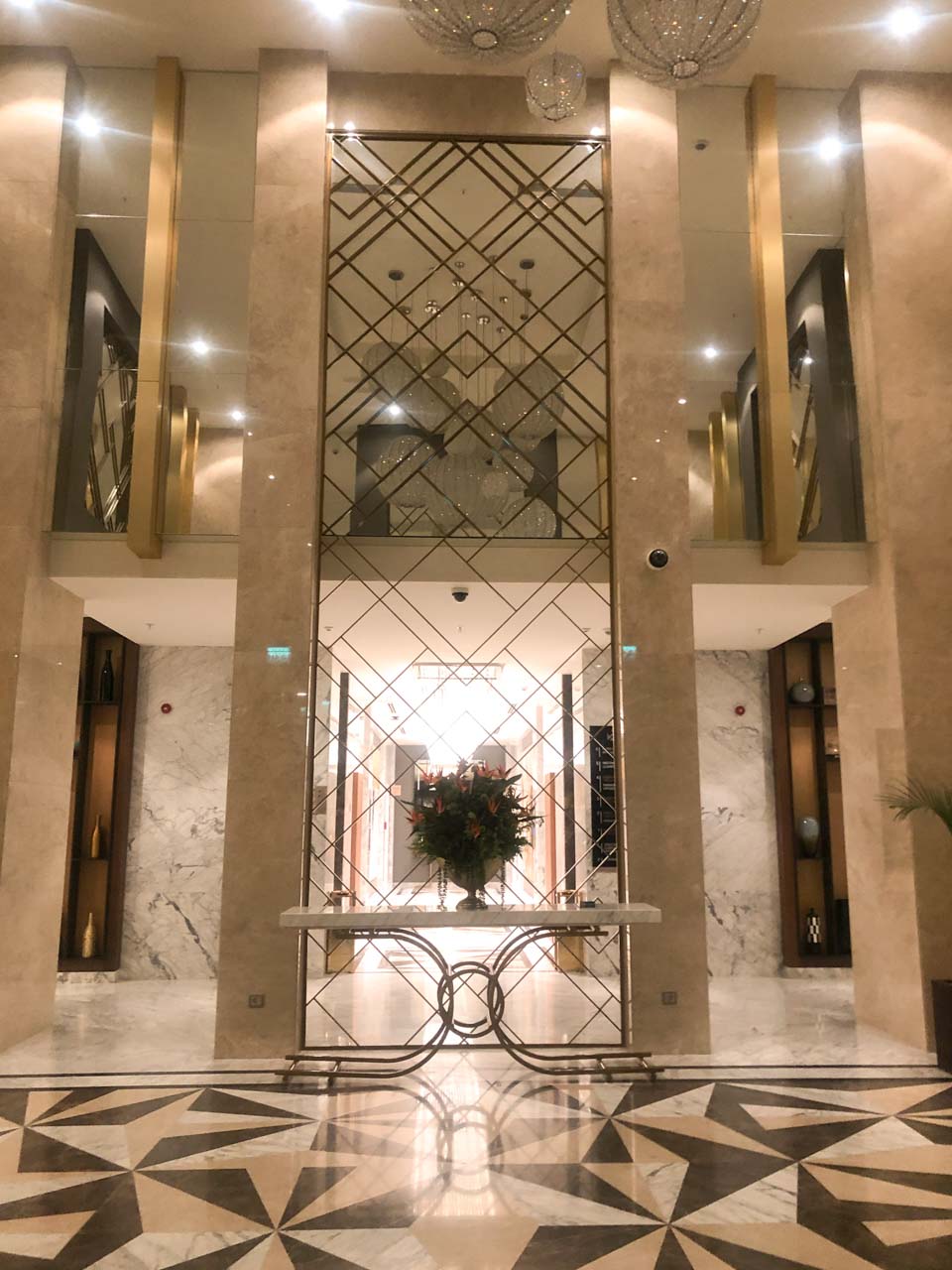
2 nights in this 5-star hotel cost me €144 + €40 extra for breakfast (around £158 in total), which I believe was a really fair price for the value we were getting.
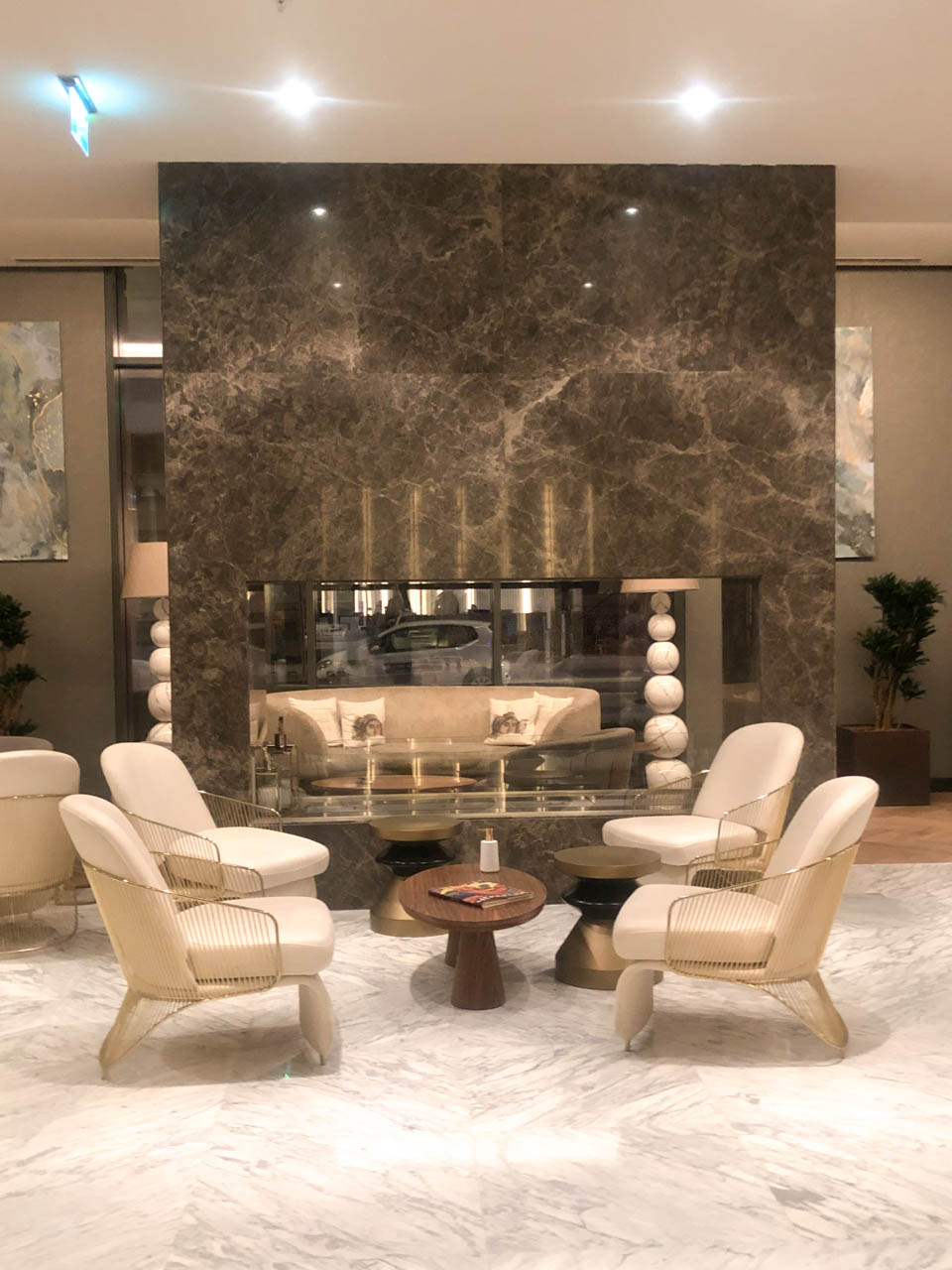
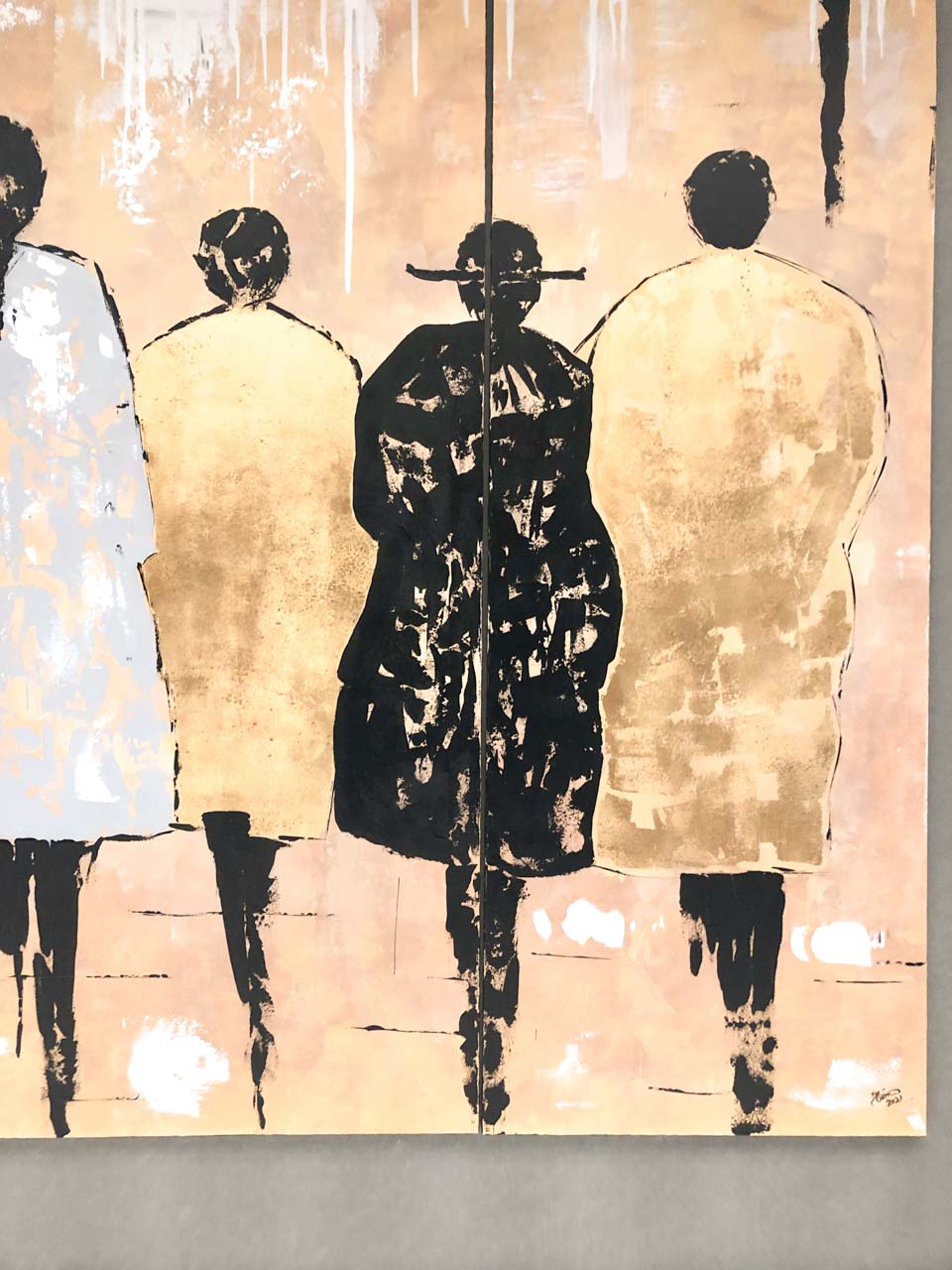
The room was extremely spacious and modern, with all the amenities we could need for a comfortable stay. My favourite was probably the speaker in the bathroom. It automatically connected to the TV in the room, so you didn’t have to worry about missing out on the most important part of whatever it was you were watching. You could also connect it to your phone and have a shower while listening to your favourite tunes – absolutely brilliant!

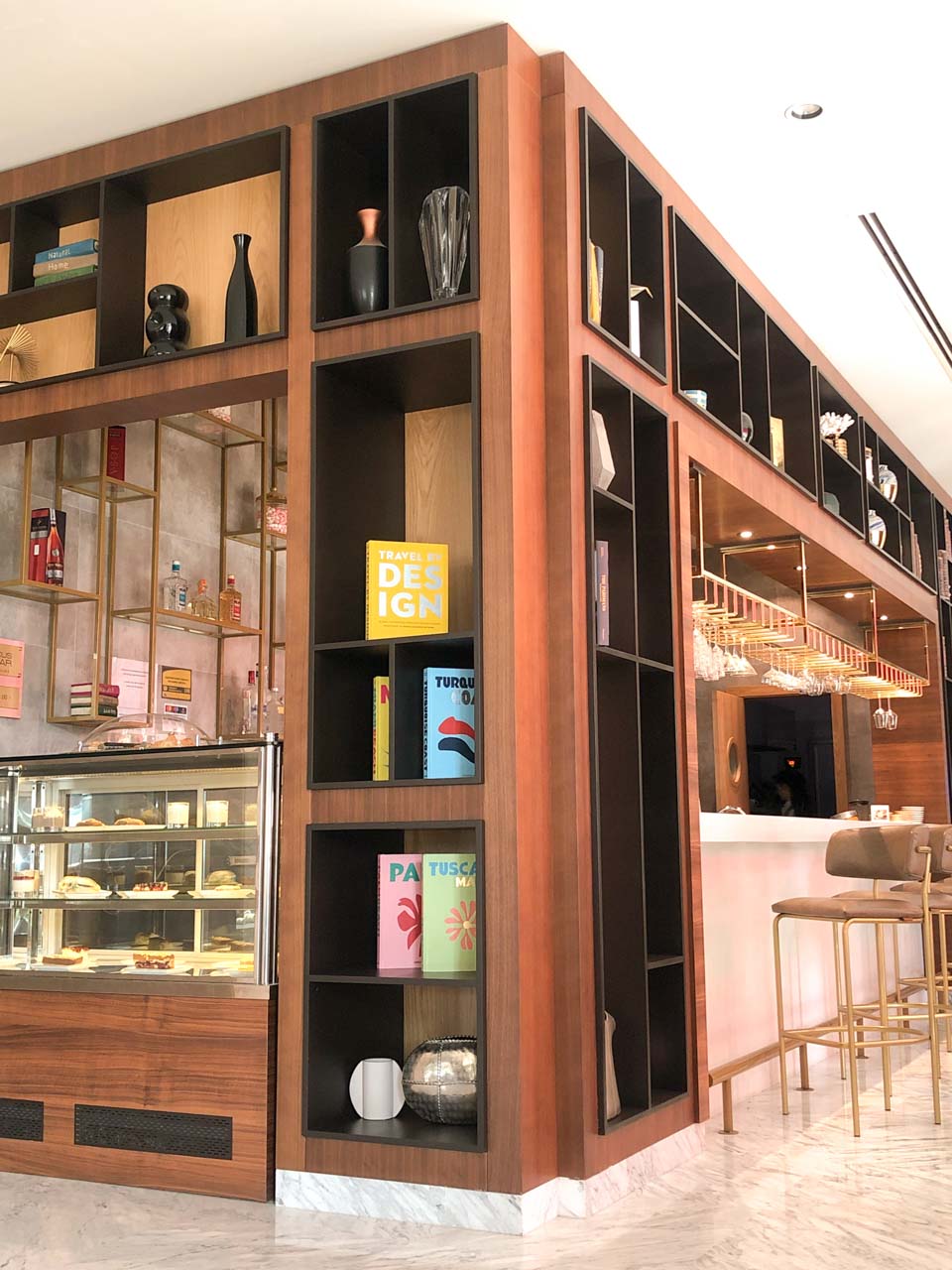
The breakfast buffet was great too. After travelling around the Balkans, it was those simple pleasures like the ability to have a fresh bread roll that I appreciated the most. Also, being able to have our morning coffee with a view of Vodno Mountain was really special!
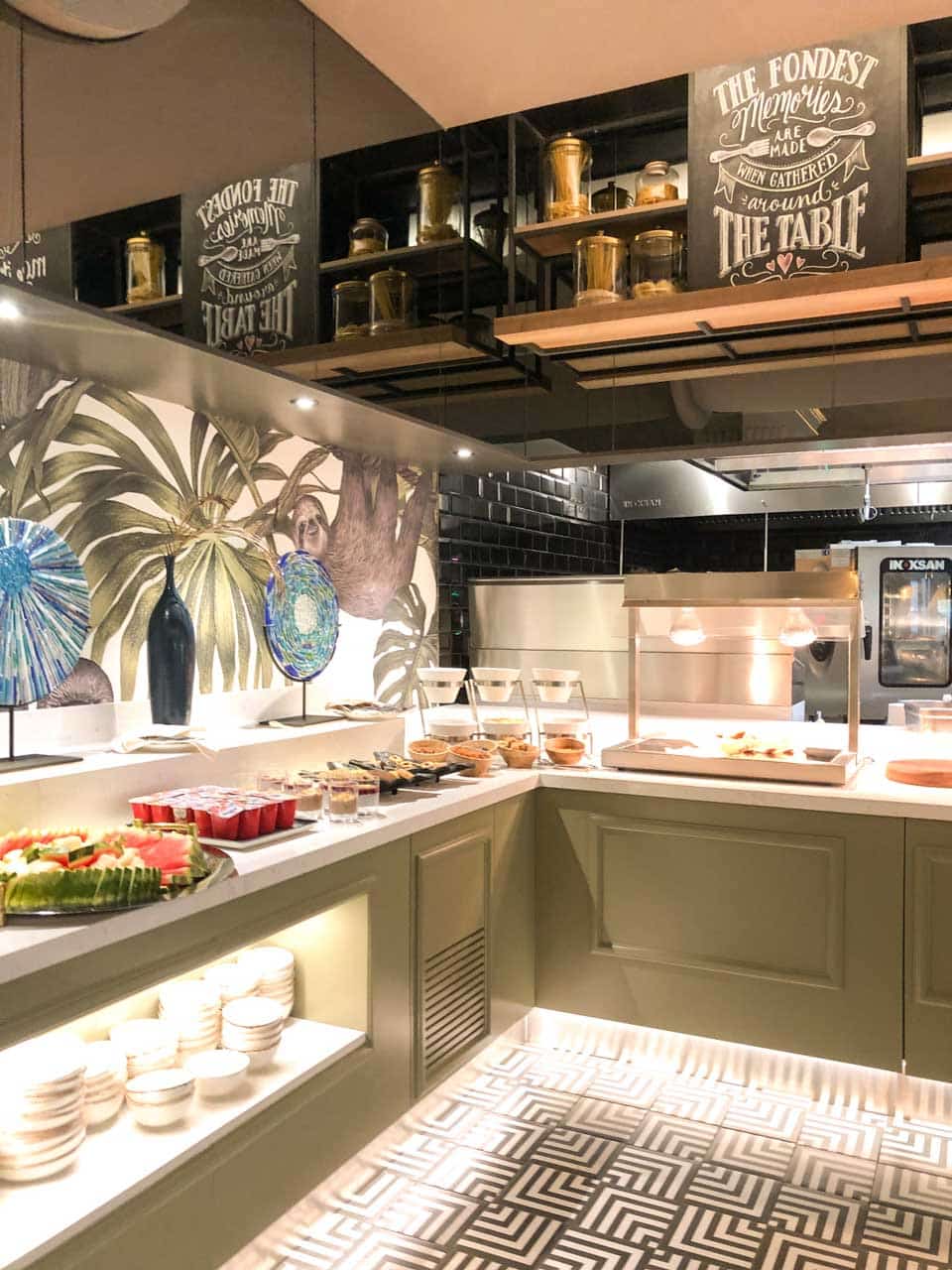
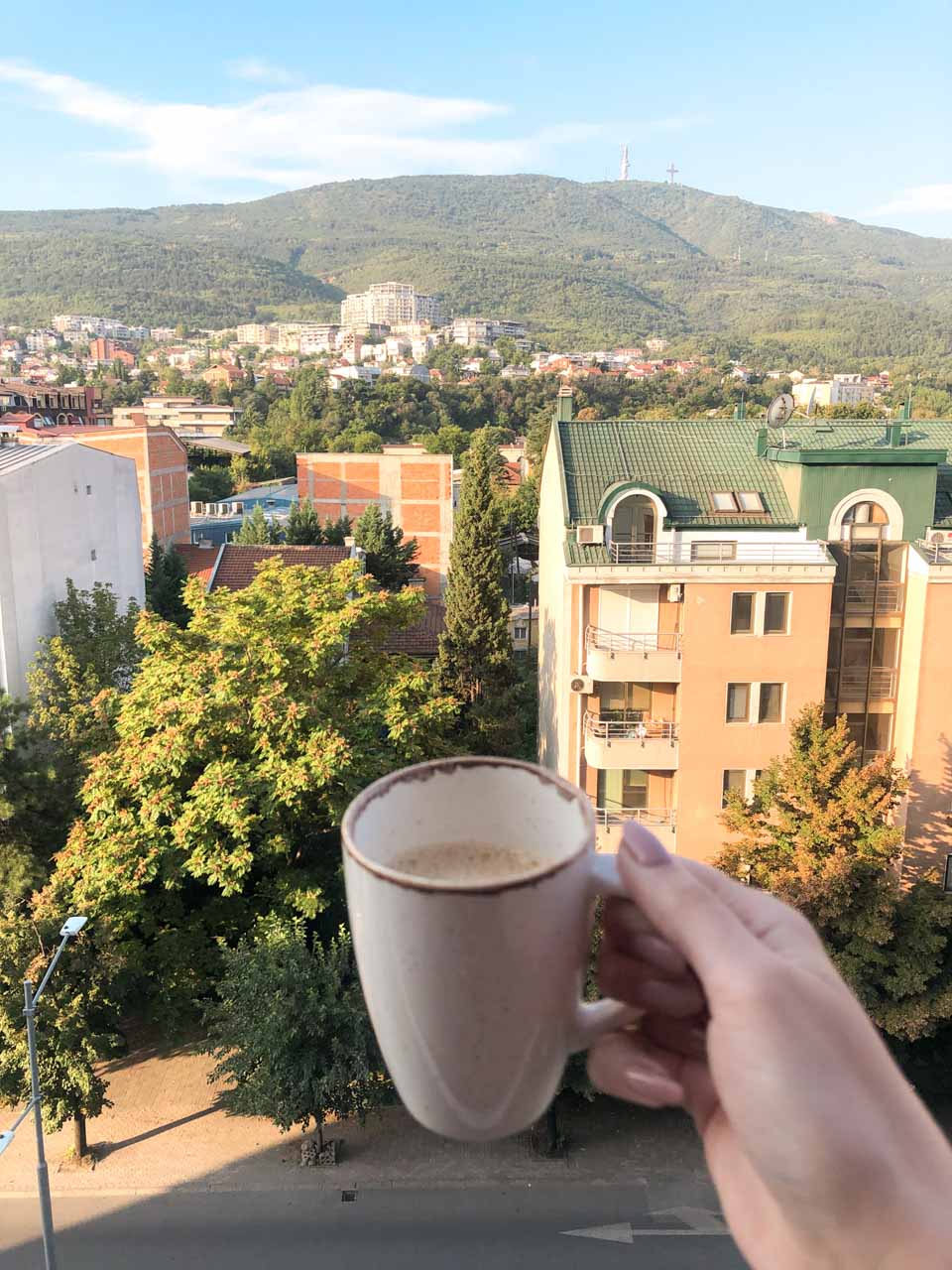
What are the SPA facilities at the Limak Skopje Luxury Hotel like?
My main deciding factor, however, was the SPA facilities. When I emailed the hotel to enquire about them beforehand, they were more than happy to answer my questions and sent over the price list straight away. Unlike many other hotels, which mostly offer different relaxation massages, here you get a wide variety of massage treatments to choose from.
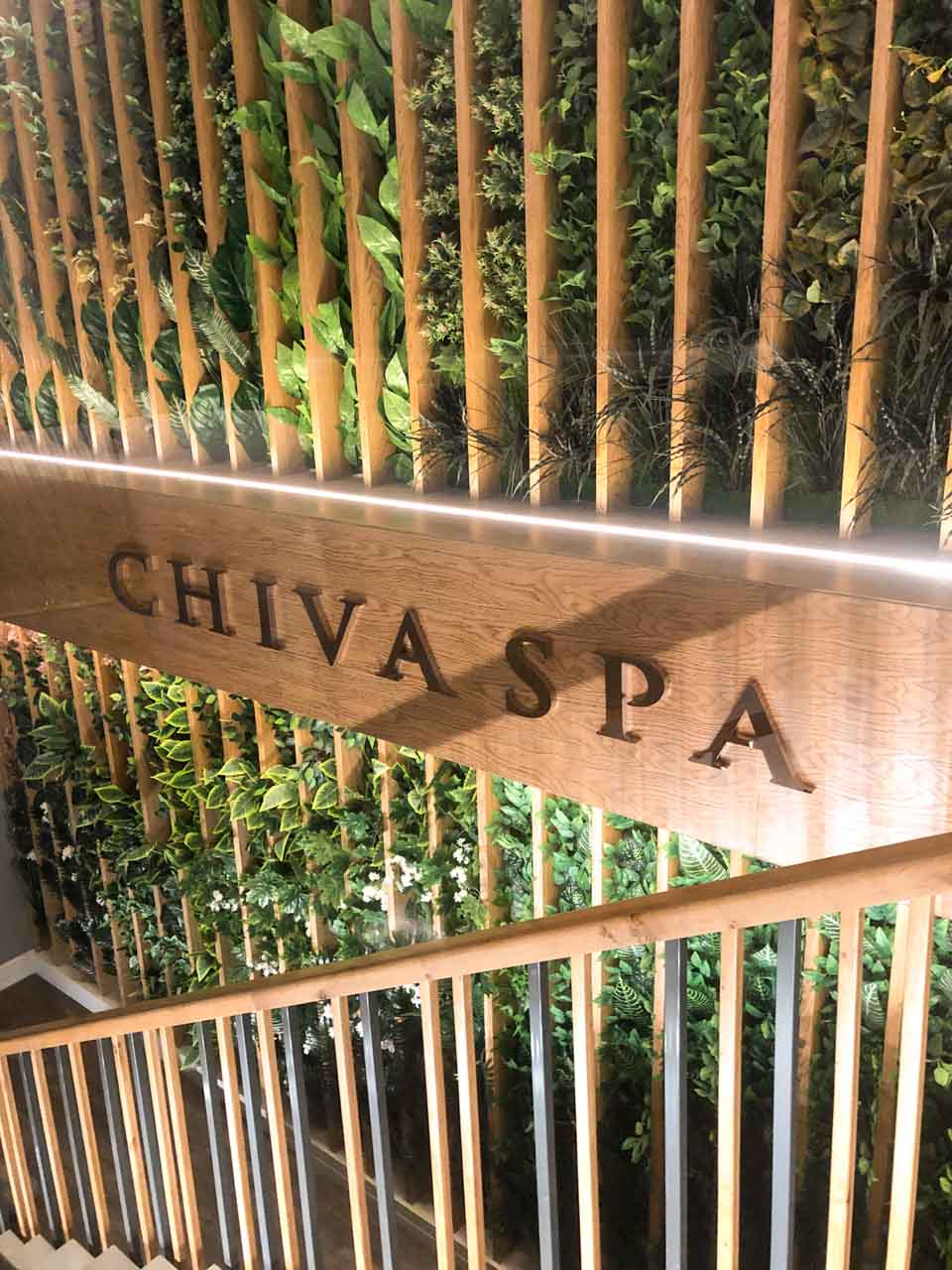

All of their massage therapists are from Bali, which enthusiasts of more intense massage techniques will certainly appreciate. Mac chose a Thai massage, while I went for something in-between and decided to try a Balinese massage for the first time. It struck the perfect balance between a light relaxation massage and an intense treatment, and I can safely say it was one of the best massages I’ve ever had.
The prices were reasonable too – 2,100 MKD (around £29/€34) for a 60-minute Thai massage and 2,400 MKD (around £33/€39) for a Balinese one, with an option to pay extra for a 90-minute treatment.
If you’re not a fan of massages, access to a Finnish sauna, steam room, Turkish hammam, and a fitness centre is complimentary for all guests. I’d say the only real drawback is that there is no pool or jacuzzi, as we love to have a soak and lounge around after a long day of exploring. If this doesn’t bother you, I couldn’t recommend the Limak Skopje Luxury Hotel* enough!
What makes the city of Skopje so quirky?
I believe that to understand the character of Skopje fully, a bit of historical backstory of North Macedonia is necessary. After gaining independence in 1991, they chose to adopt the name “Republic of Macedonia”, which Greece had an issue with. The ancient kingdom of Macedonia, which was ruled by Alexander the Great and his father Philip II, encompassed much of present-day North Macedonia, as well as parts of Greece, Bulgaria, and Albania.
Therefore, Greece argued that North Macedonia’s use of this name indicated territorial claims over its region and cultural heritage. In 2018, both countries finally reached a compromise, and North Macedonia agreed to change its name to the Republic of North Macedonia.
In an attempt to assert its own cultural identity, North Macedonia developed an architectural style which intends to evoke the grandeur of the ancient kingdom of Macedonia. However, as the city of Skopje was rebuilt with a modernist vision following the 1963 earthquake, the result can be rather comical.

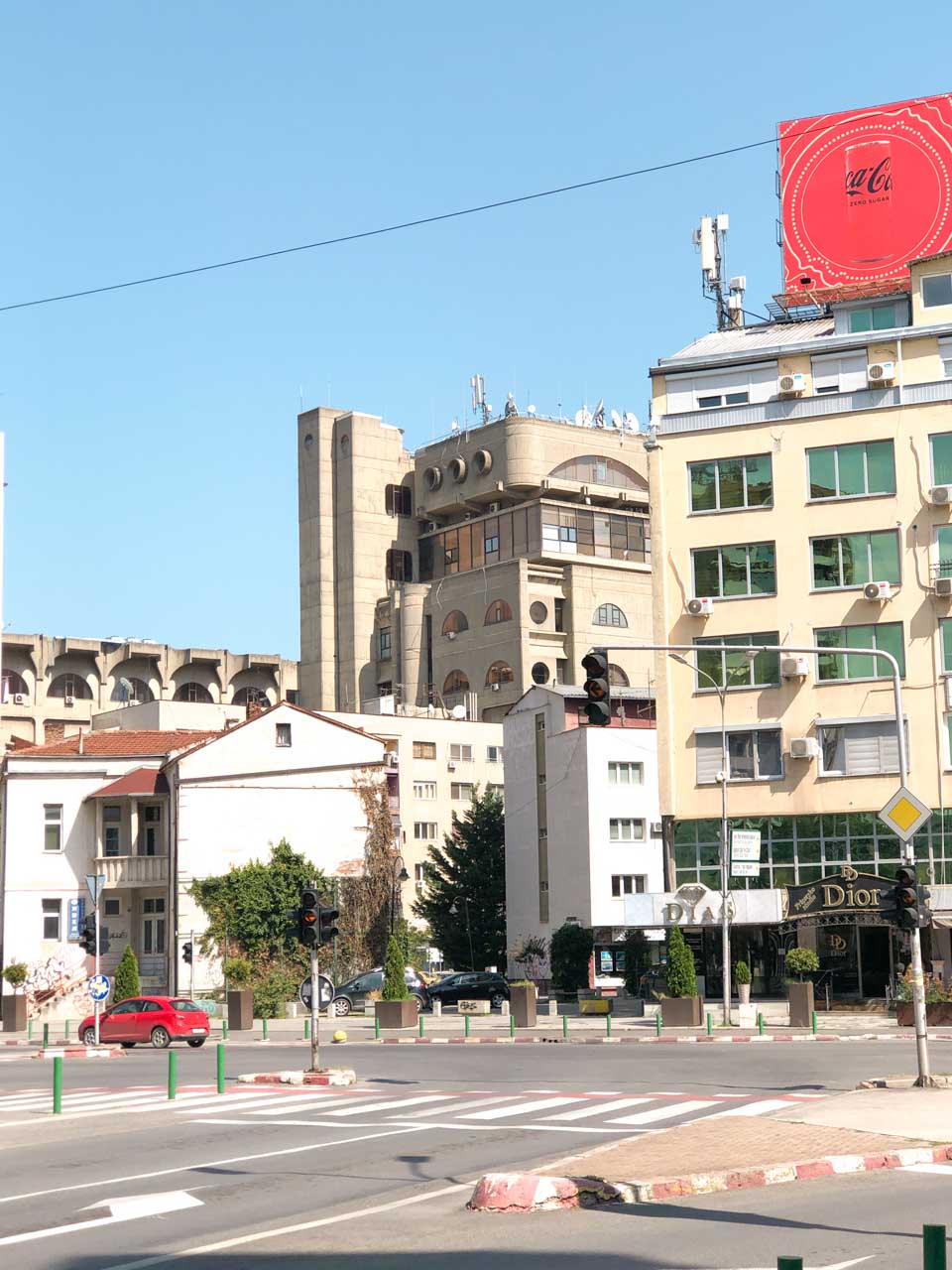
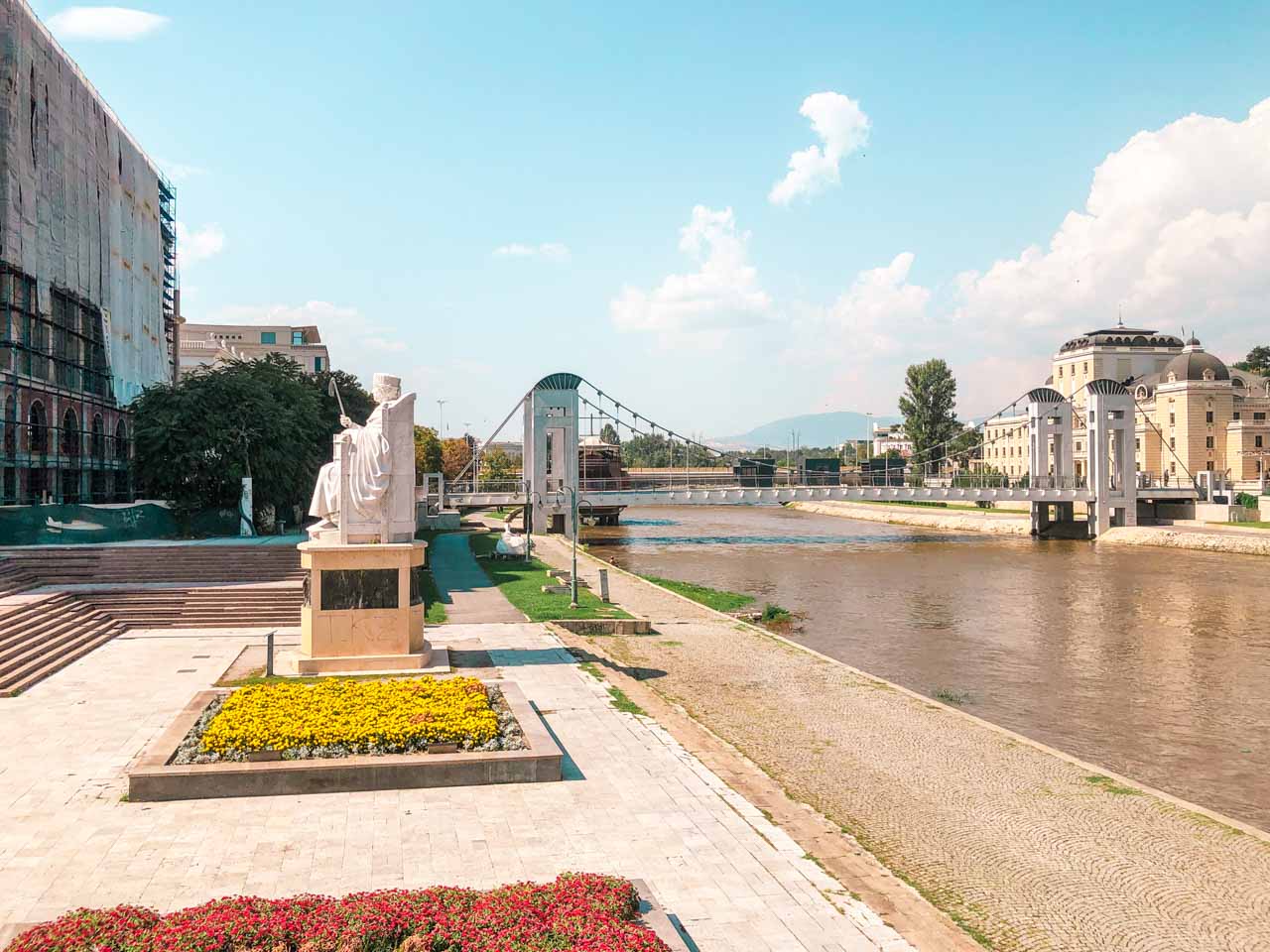
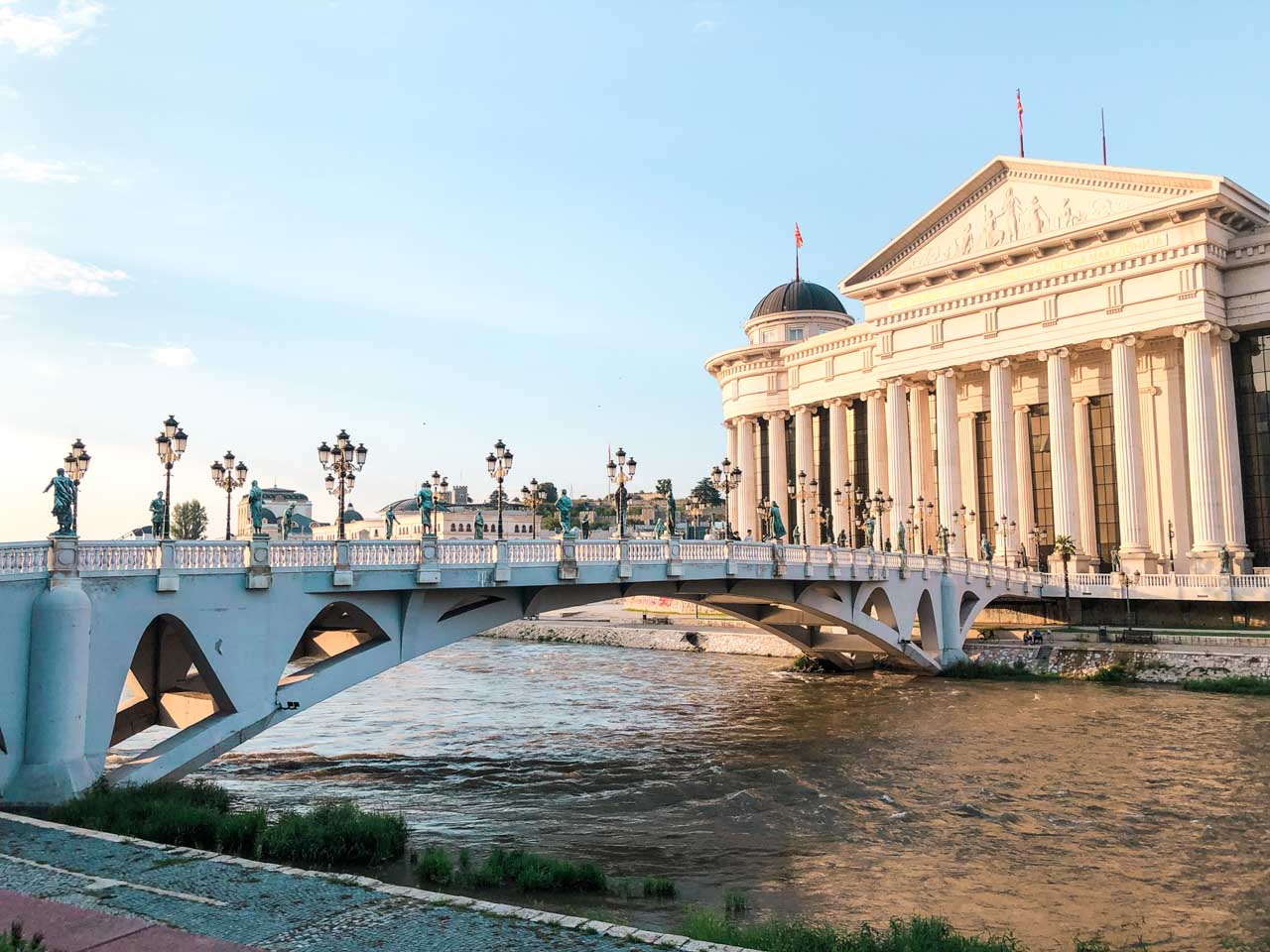
One of the most striking examples can be seen in Skopje’s central square where you can find a statue of Alexander the Great on horseback perched atop a massive marble fountain with sculptures of Macedonian warriors and lions.
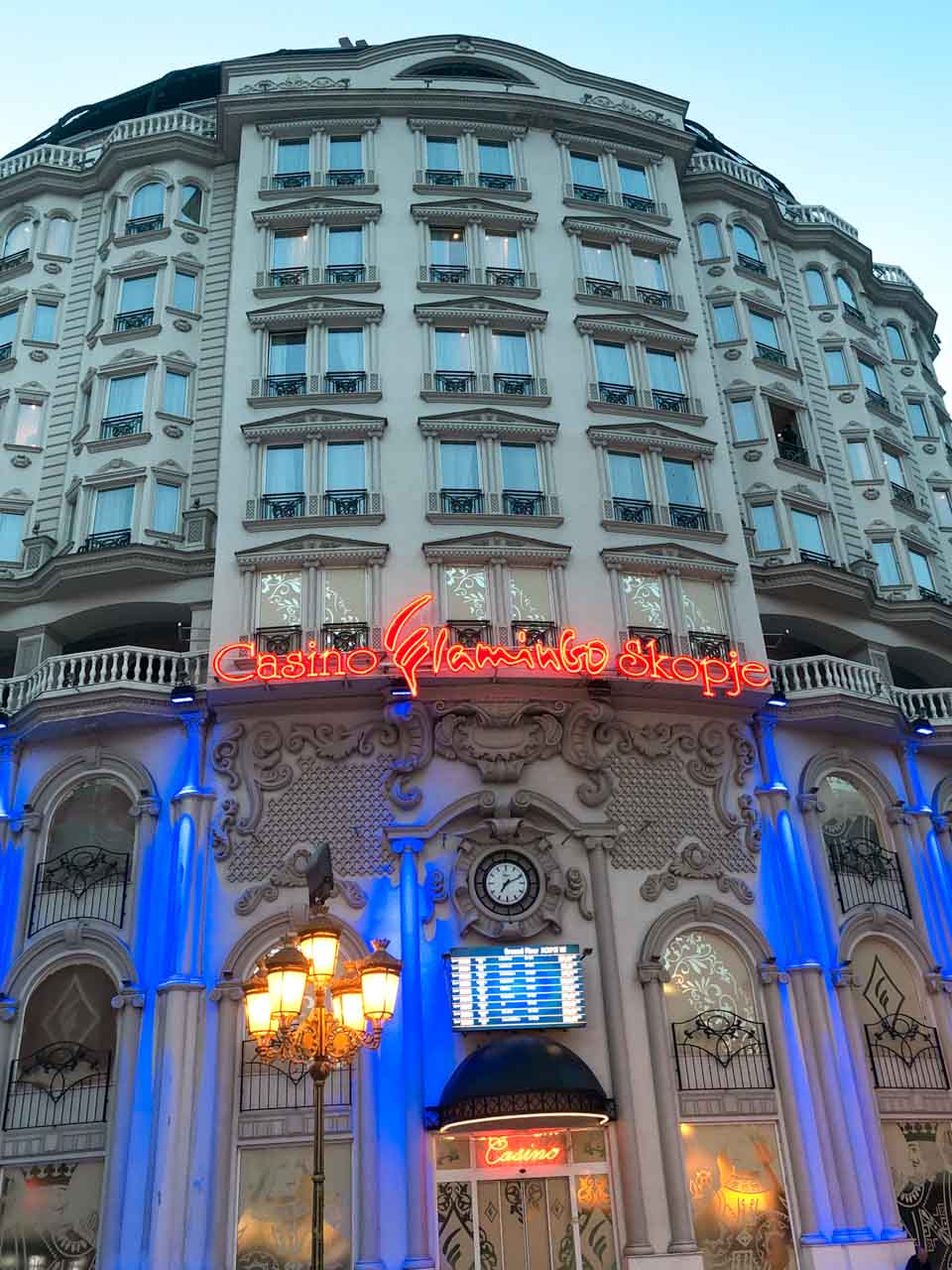
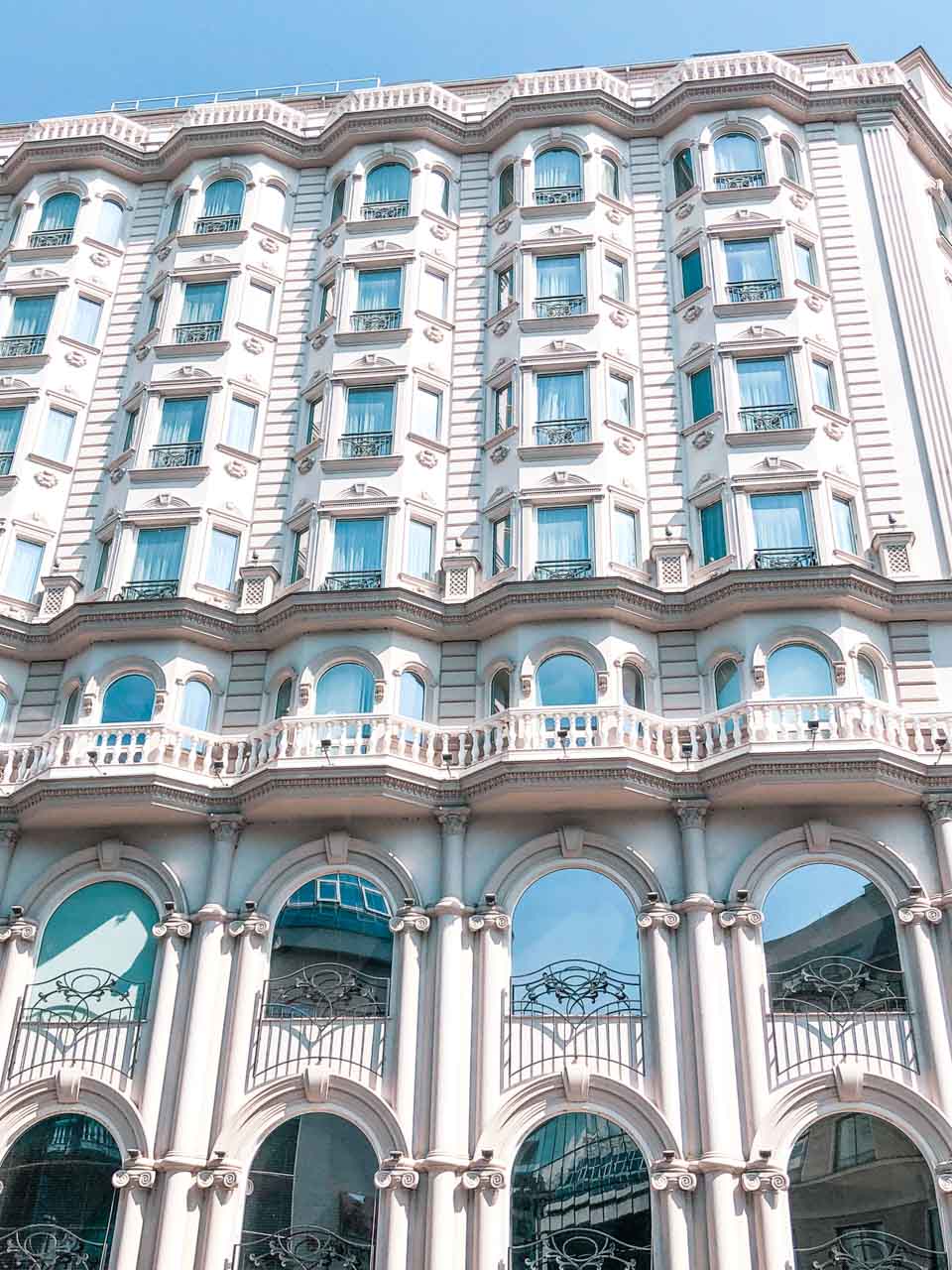
On top of that, we also spotted red double-decker buses, a triumphal arch, and a charging bull statue closely resembling that of Wall Street, which was probably the biggest cultural mishmash we’ve seen!
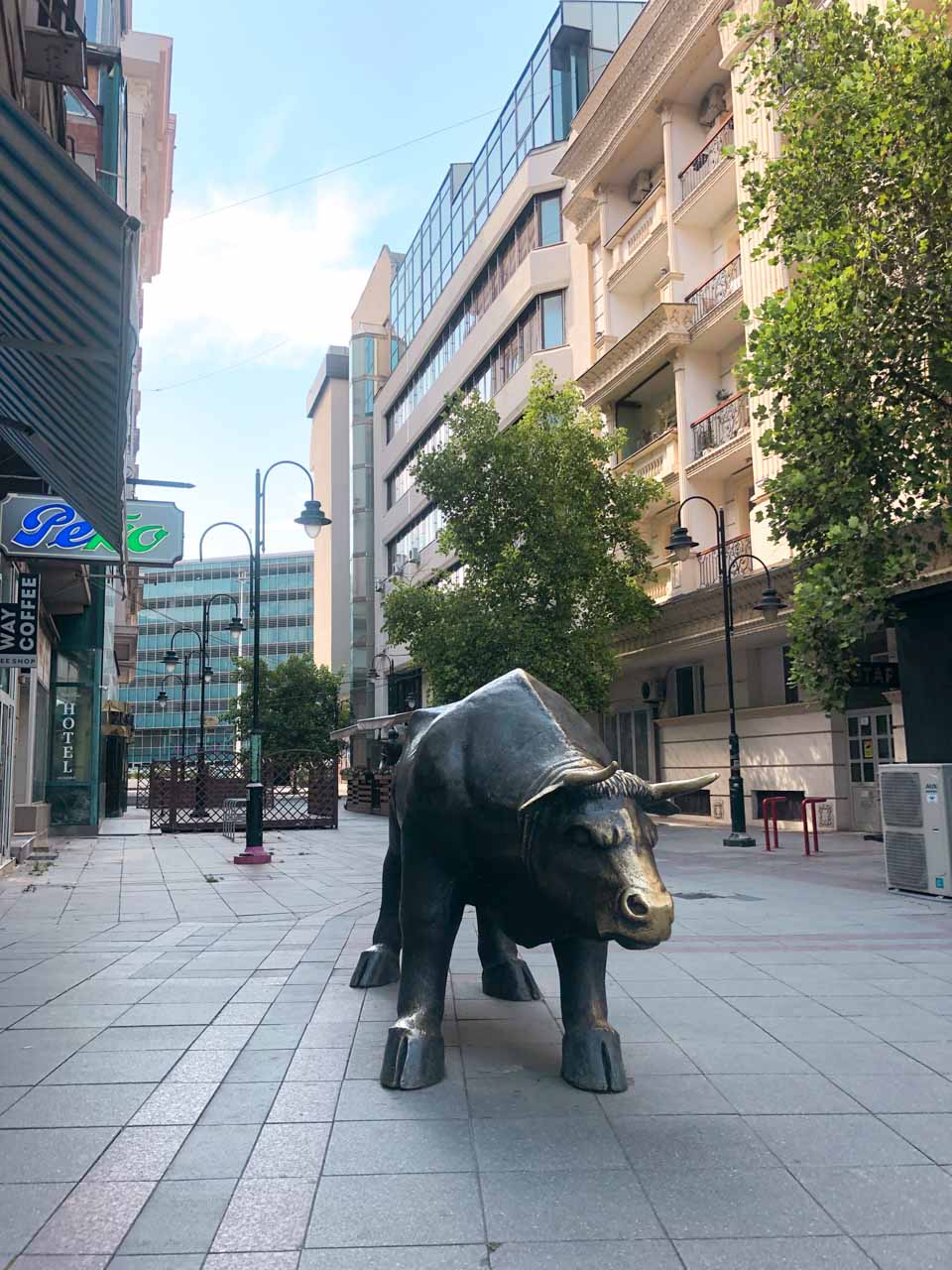
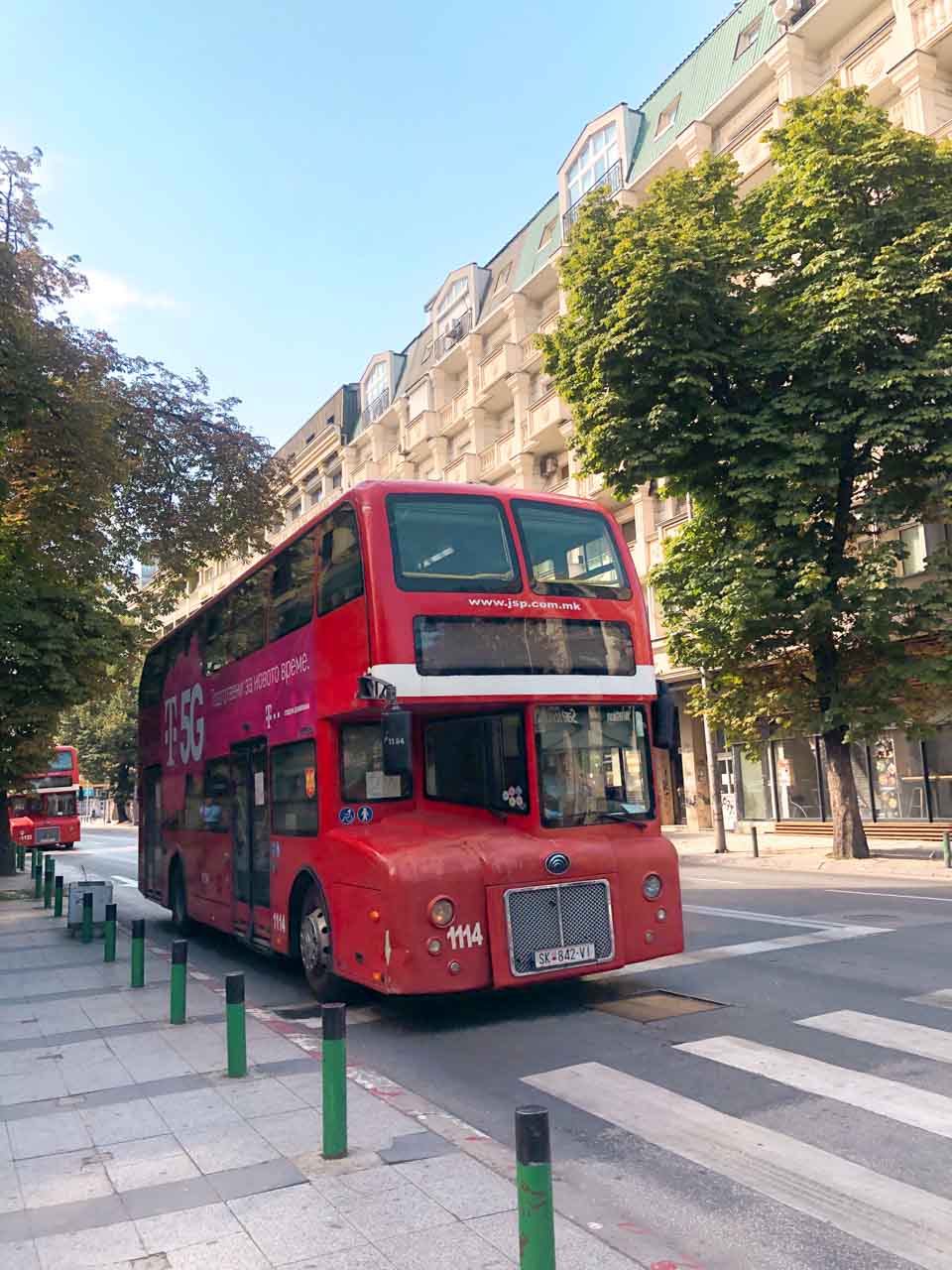
Best things to do in Skopje
Disclaimer: One of the things Skopje’s known for is being the birthplace of Mother Teresa. To this day, she remains a highly controversial figure, and her practices meet with mixed reactions. I personally lean more towards her critics, which is why the only place dedicated to Mother Teresa I visited in Skopje was her birthplace. The original house was demolished to create a pedestrian-only zone in the city centre, but there’s a small memorial plaque. If you’d like to learn more about her life, a new memorial house was constructed in Skopje – you can find out more on the museum’s website.



1. See the iconic Warrior on a Horse statue
I’ve already teased Skopje’s most iconic landmark in the previous section, but you couldn’t miss it if you tried. Towering over the city’s central square, this 22-metre bronze statue shows Alexander the Great riding his favourite steed.
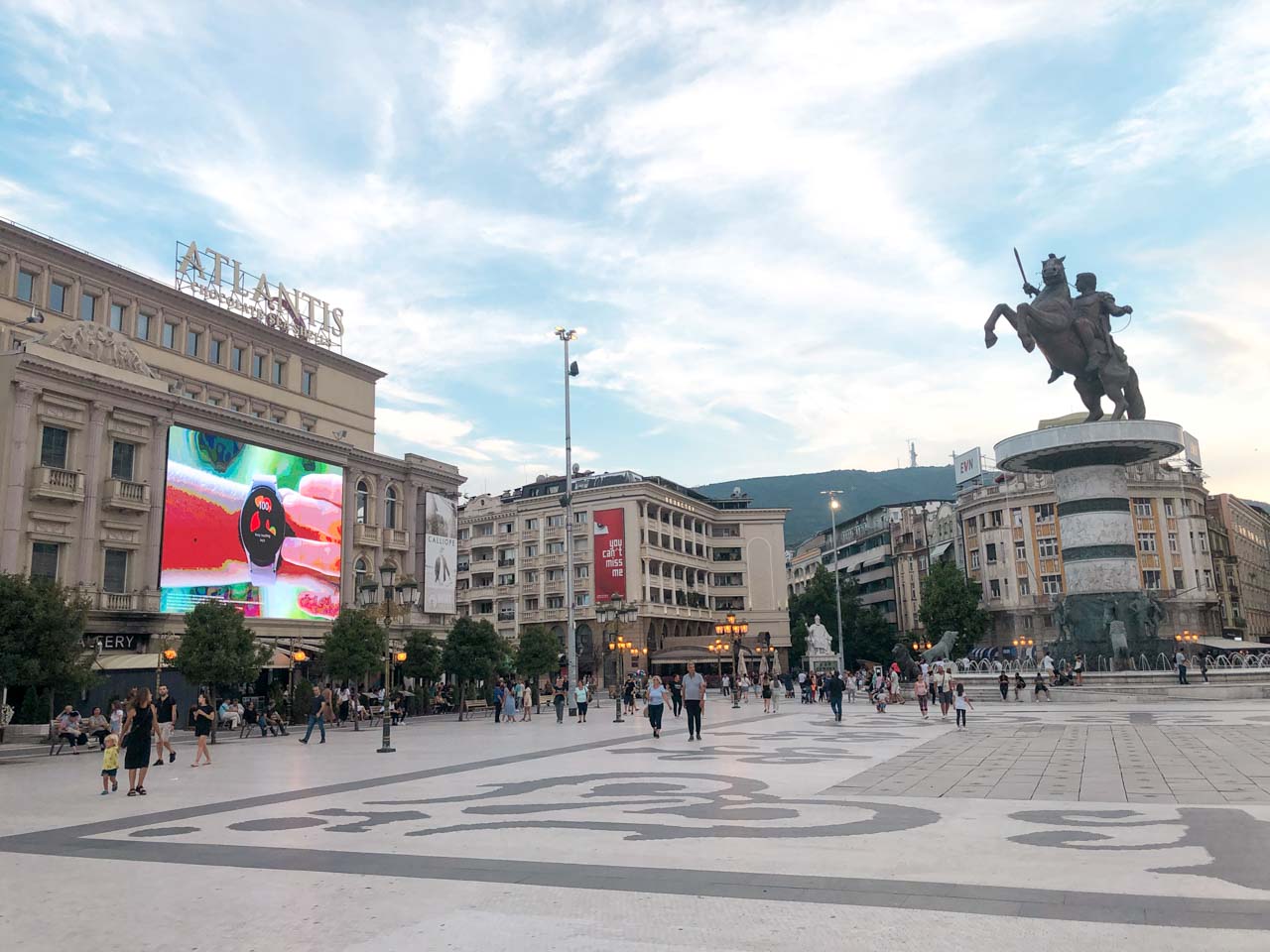

To avoid further angering the Greeks, they chose the cryptic name “Warrior on a Horse”, but the monument bears an uncanny resemblance to the legendary conqueror. It was built as part of the Skopje 2014 project, a controversial urban renewal programme meant to revitalise the city’s architecture and assert its cultural identity following the dispute over the country’s name.

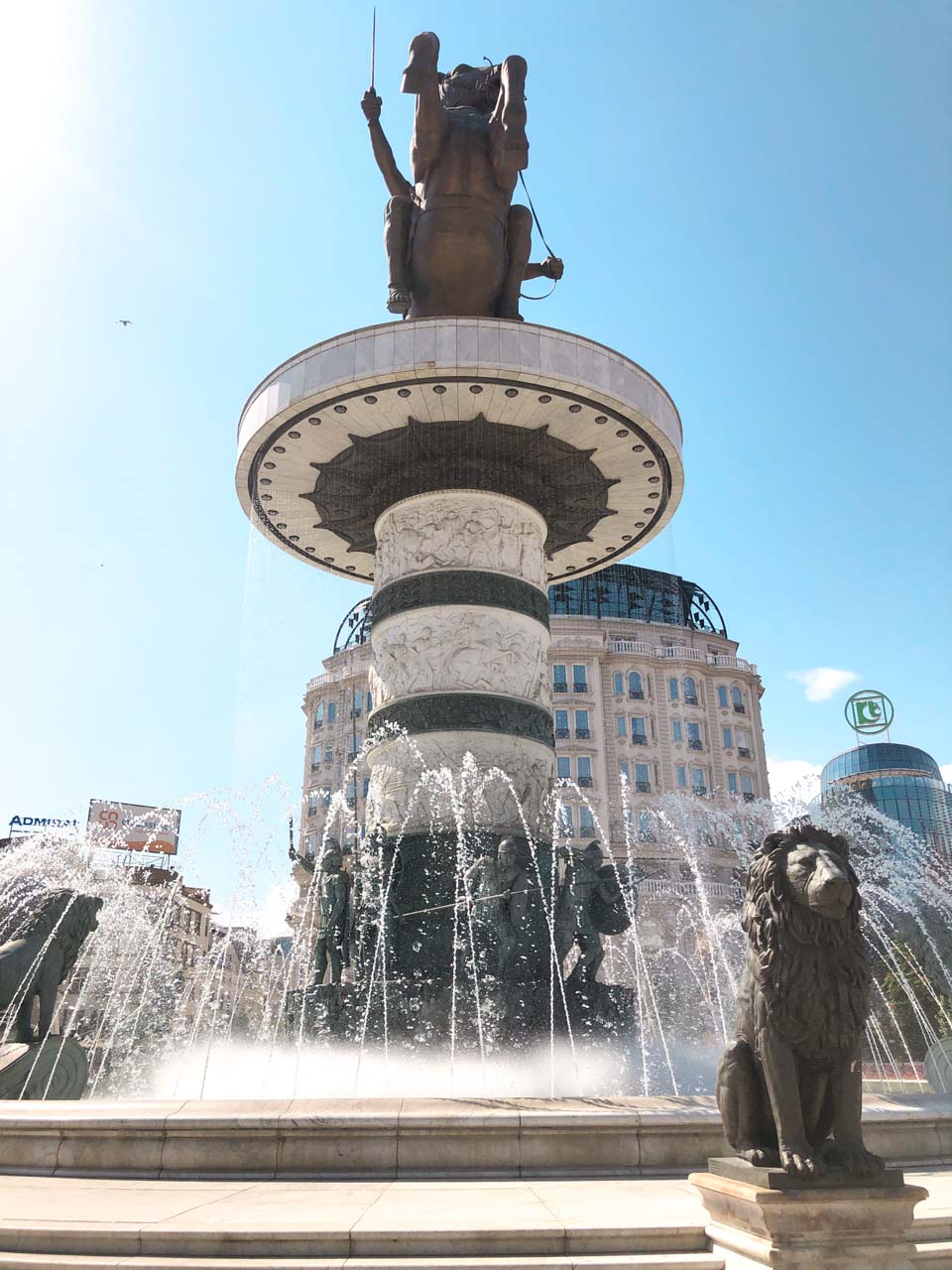
In the evening, the statue lights up in a spectacular display of colours which, along with cascading water, creates a truly magical atmosphere. It’s a great place to start your trip to Skopje, or relax after a day of exploring the city.

2. Admire art at a 15th-century Turkish bath
When we arrived in Skopje, stepping outside felt like being hit by a wall of scorching heat. We thought we might melt into a puddle at any moment, so we sought refuge at an old Turkish bath turned art gallery.
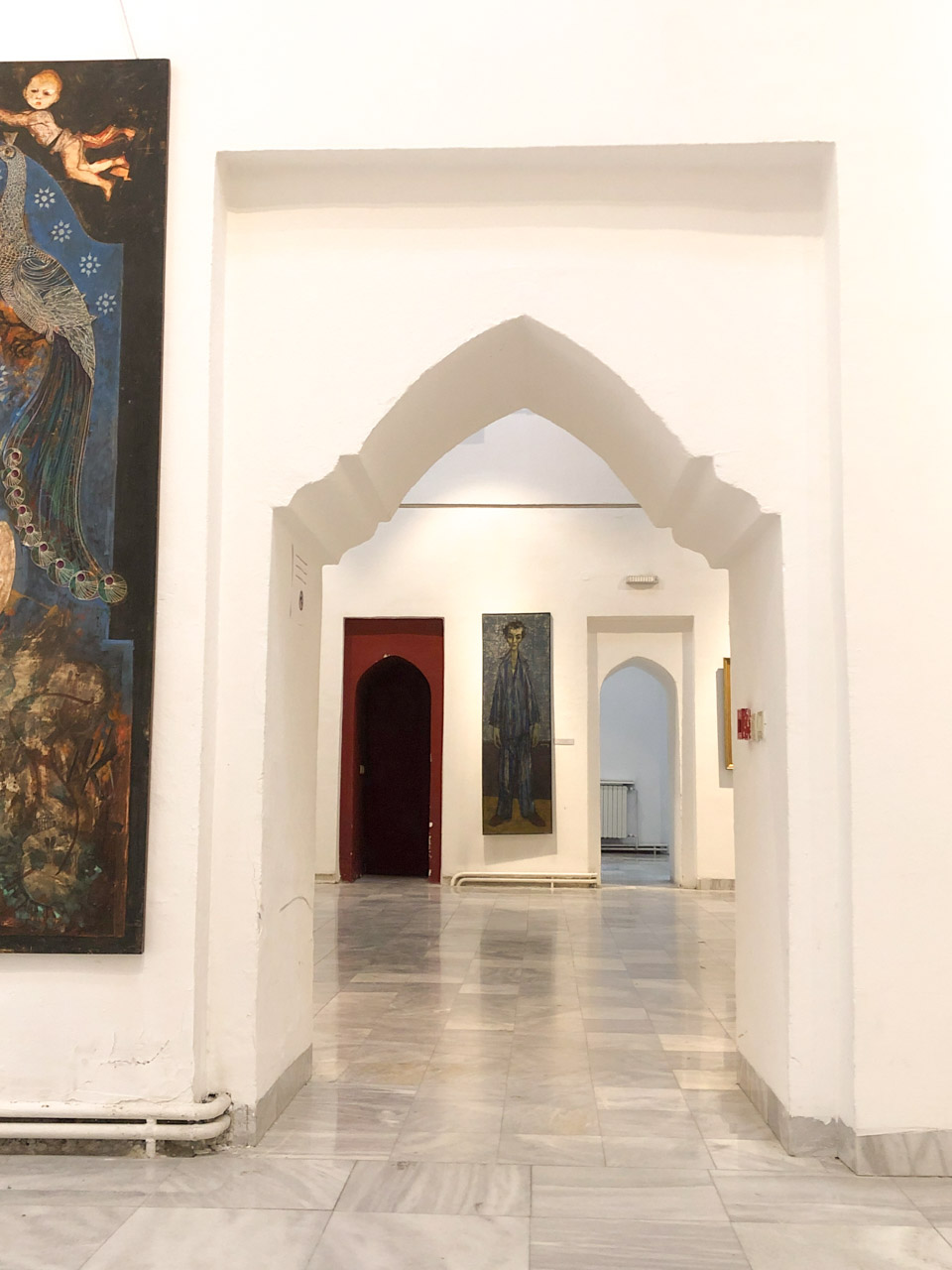
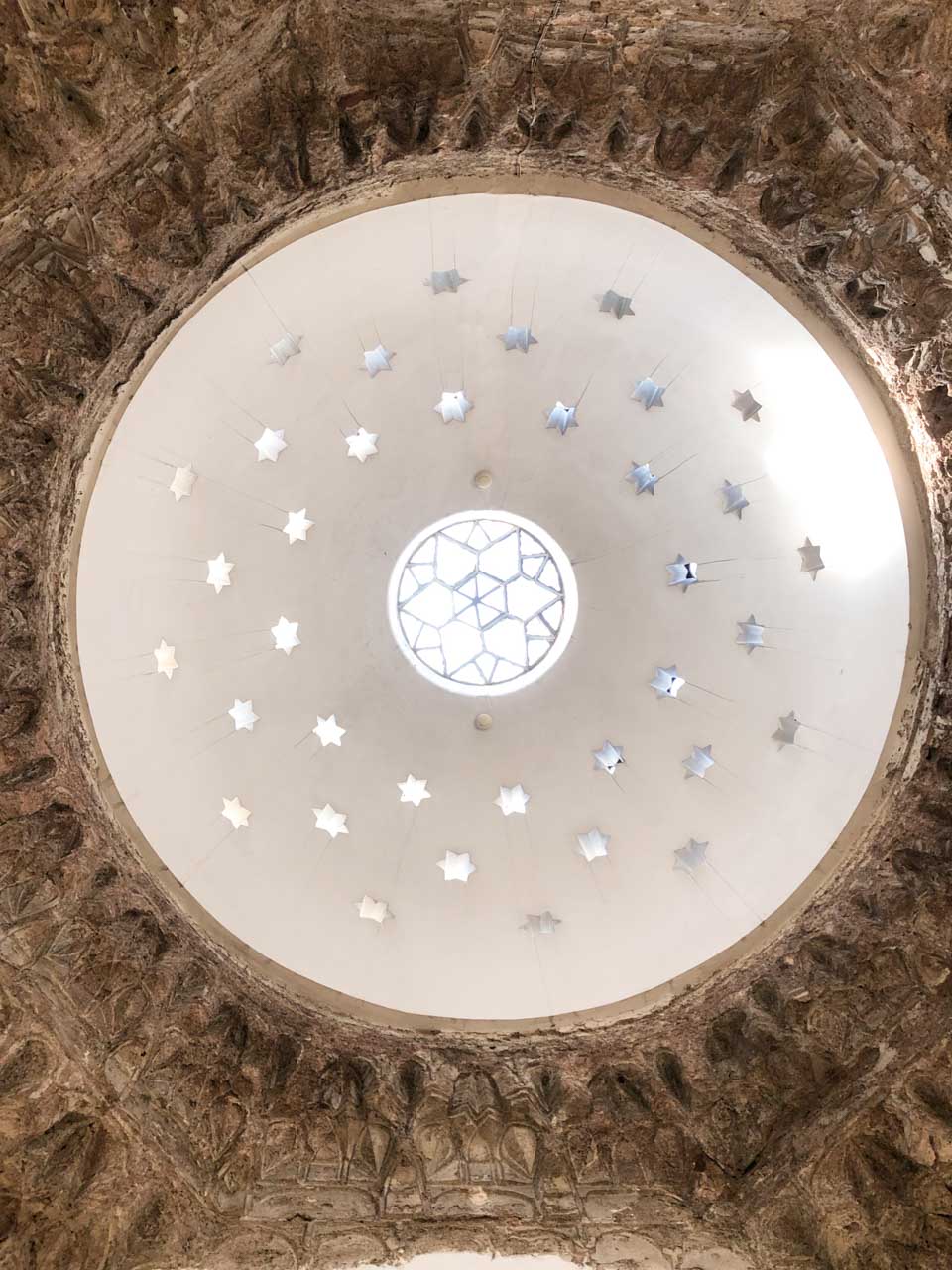
Daut Pasha Hamam was built in the 15th century by the Grand Vizier of the Ottoman Empire for his harem. It’s topped by 13 asymmetric domes, with a total area of 900 square metres.
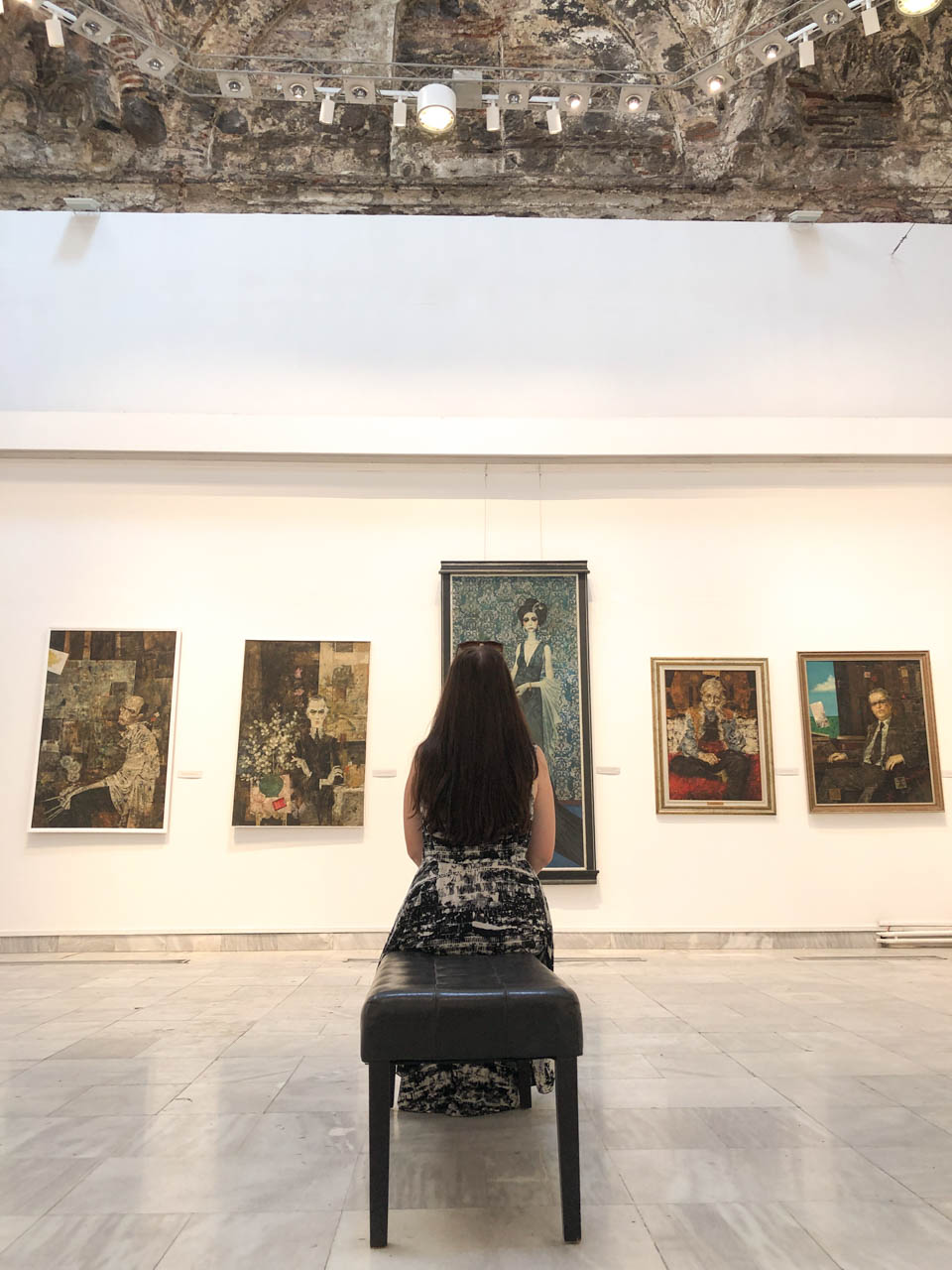
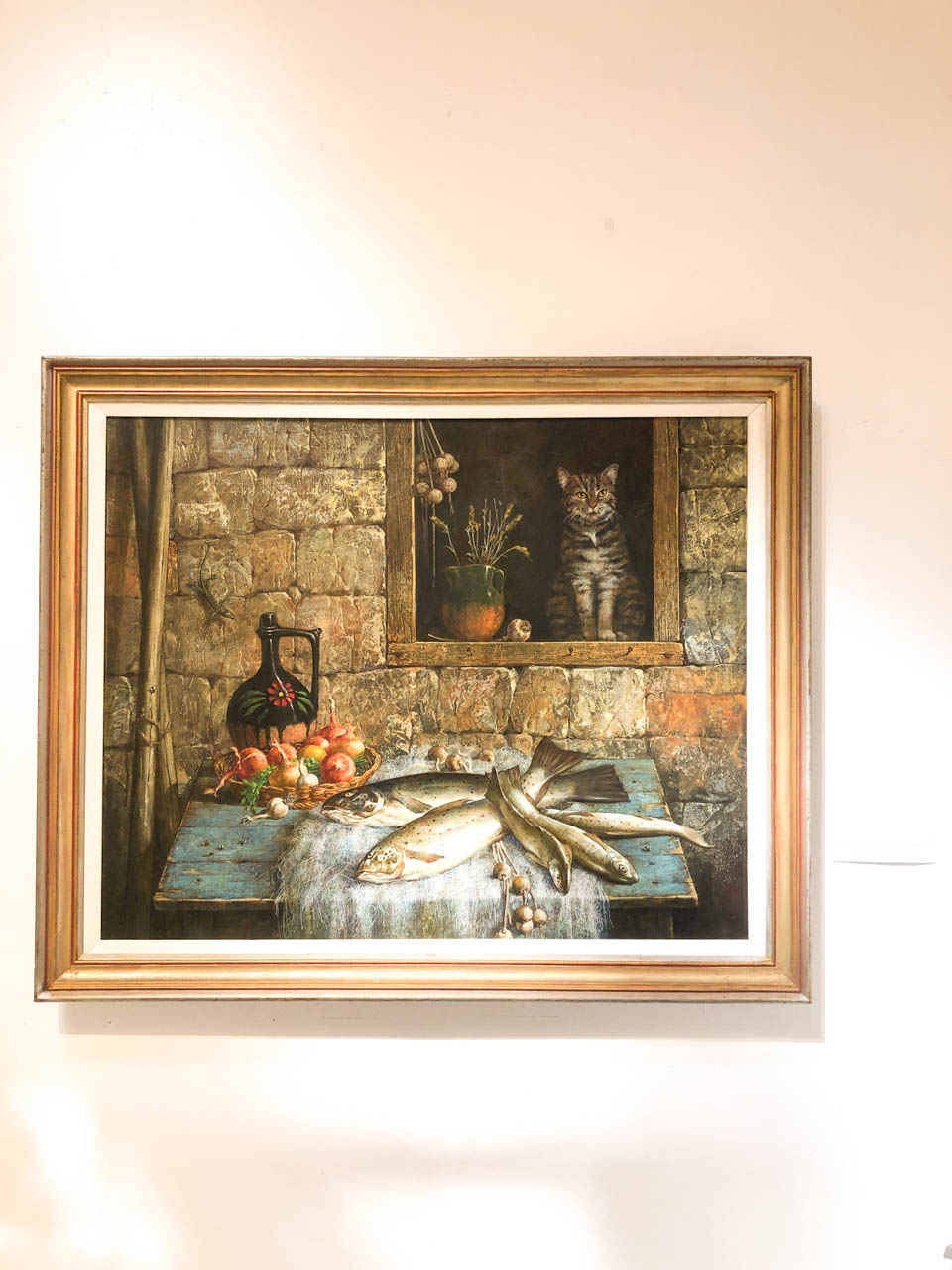
It served as a public bathhouse for women and men for several centuries, until it was converted into the National Art Gallery in 1948. Since then, it has also hosted various classical concerts, theatre performances, and other cultural events.

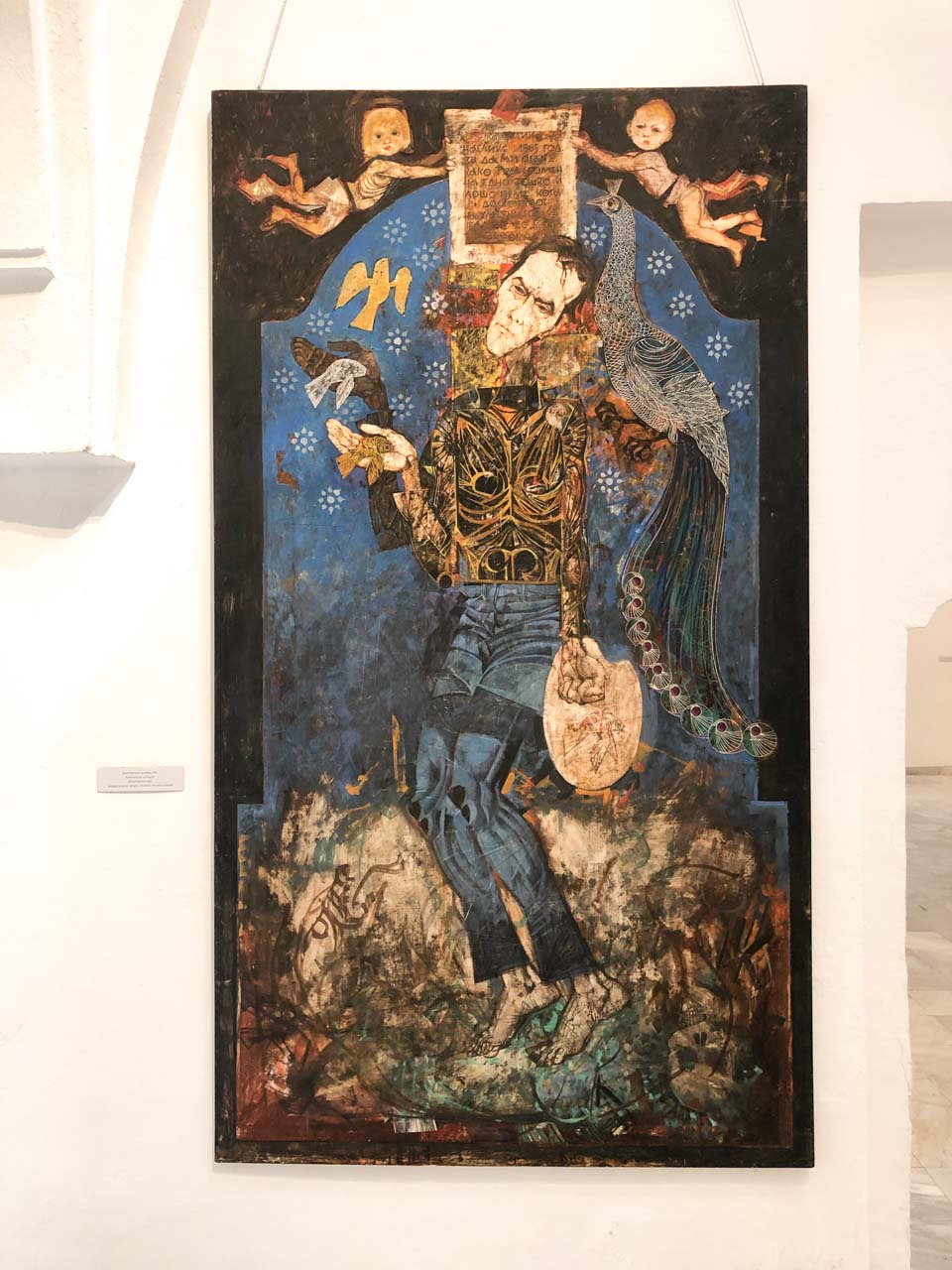
At the time of our visit, tickets cost 100 MKD (around £1.50/€1.60). I’m not sure if it’s a year-round offer, but we also got a bottle of freezing cold flavoured water each with our tickets, which was an absolute godsend in that weather!
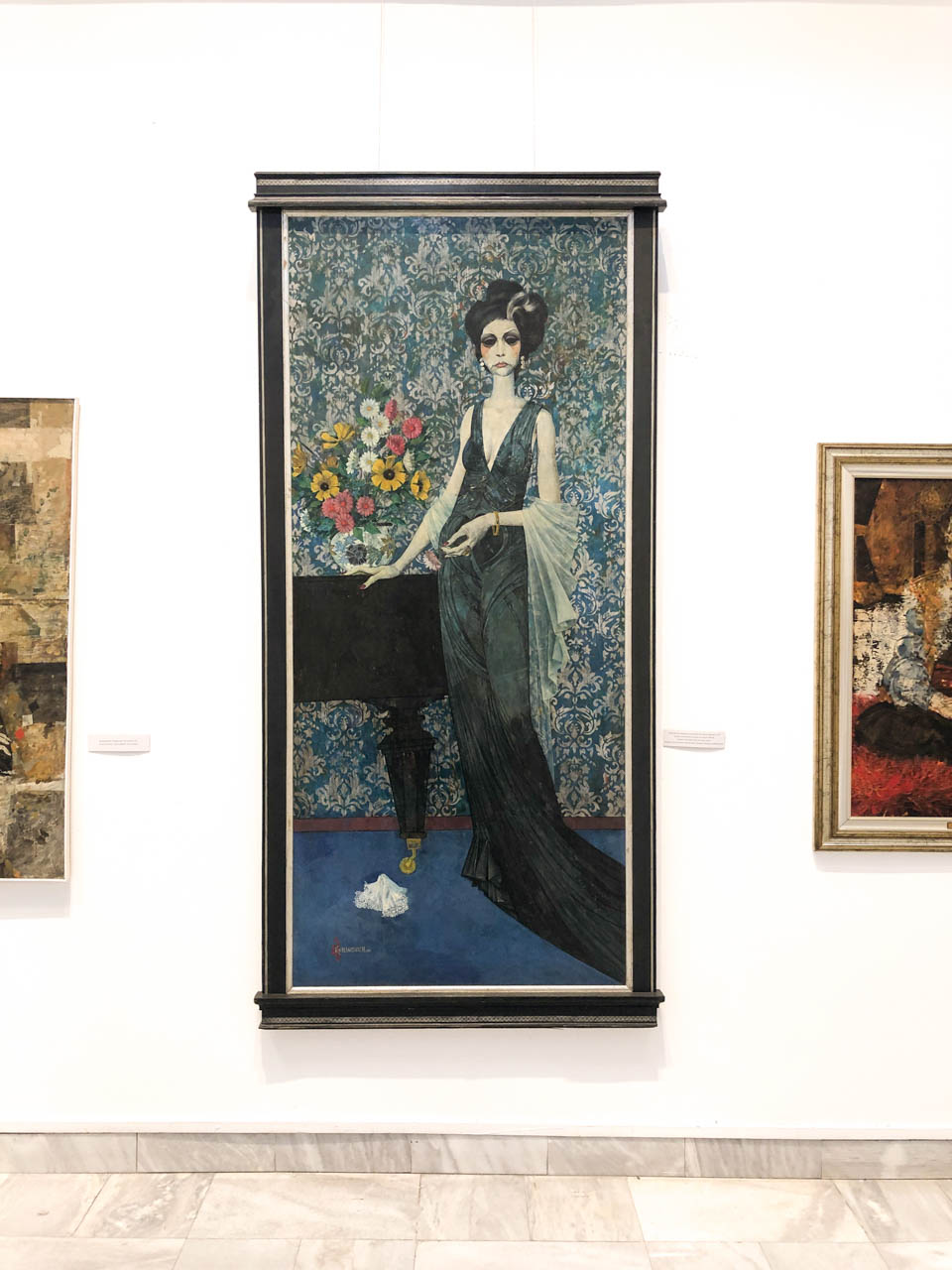
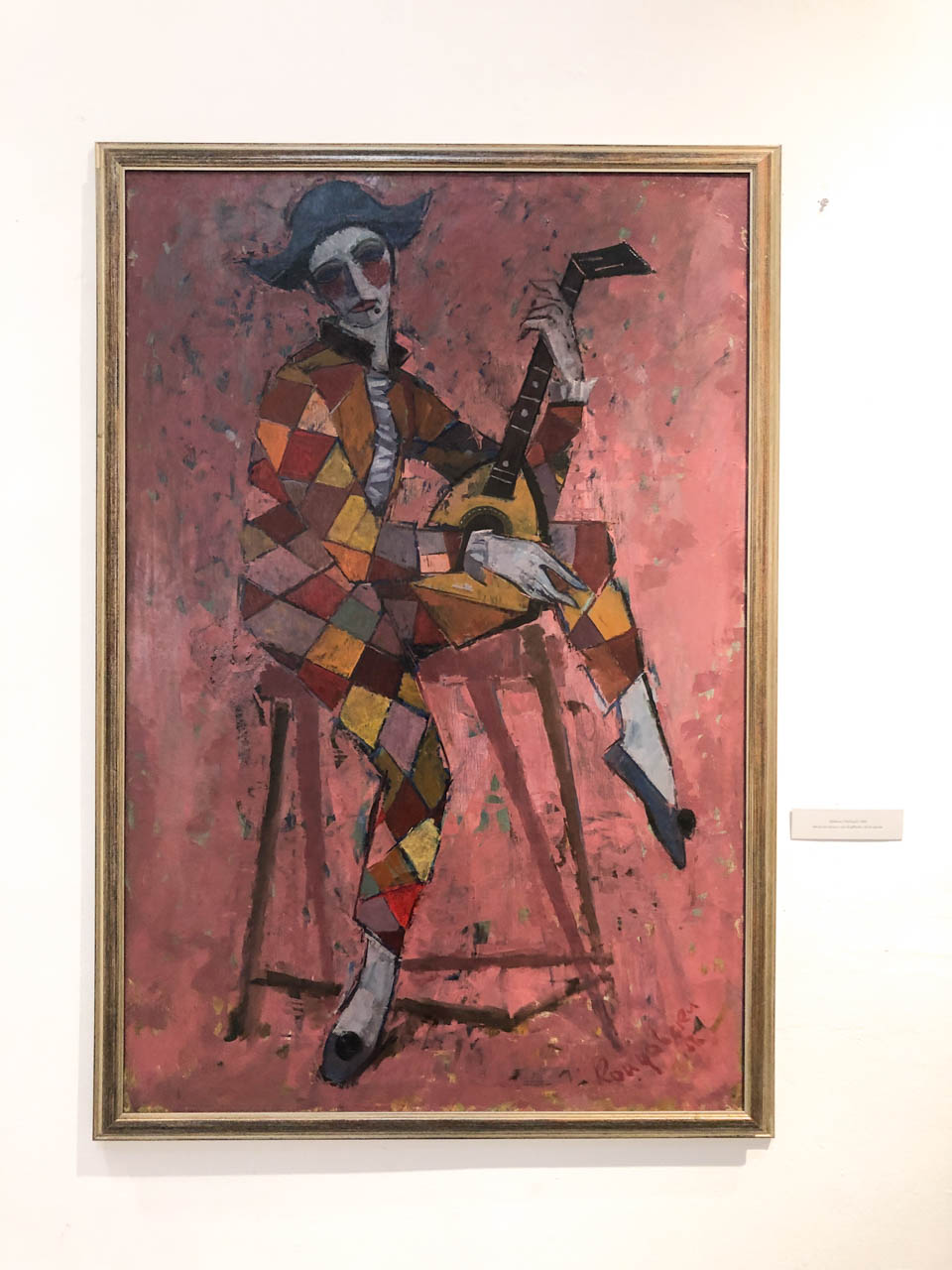
Inside, you can find paintings by some of North Macedonia’s most talented contemporary artists, as well as various artworks dating as far back as the 14th century, divided into 9 exhibition halls.

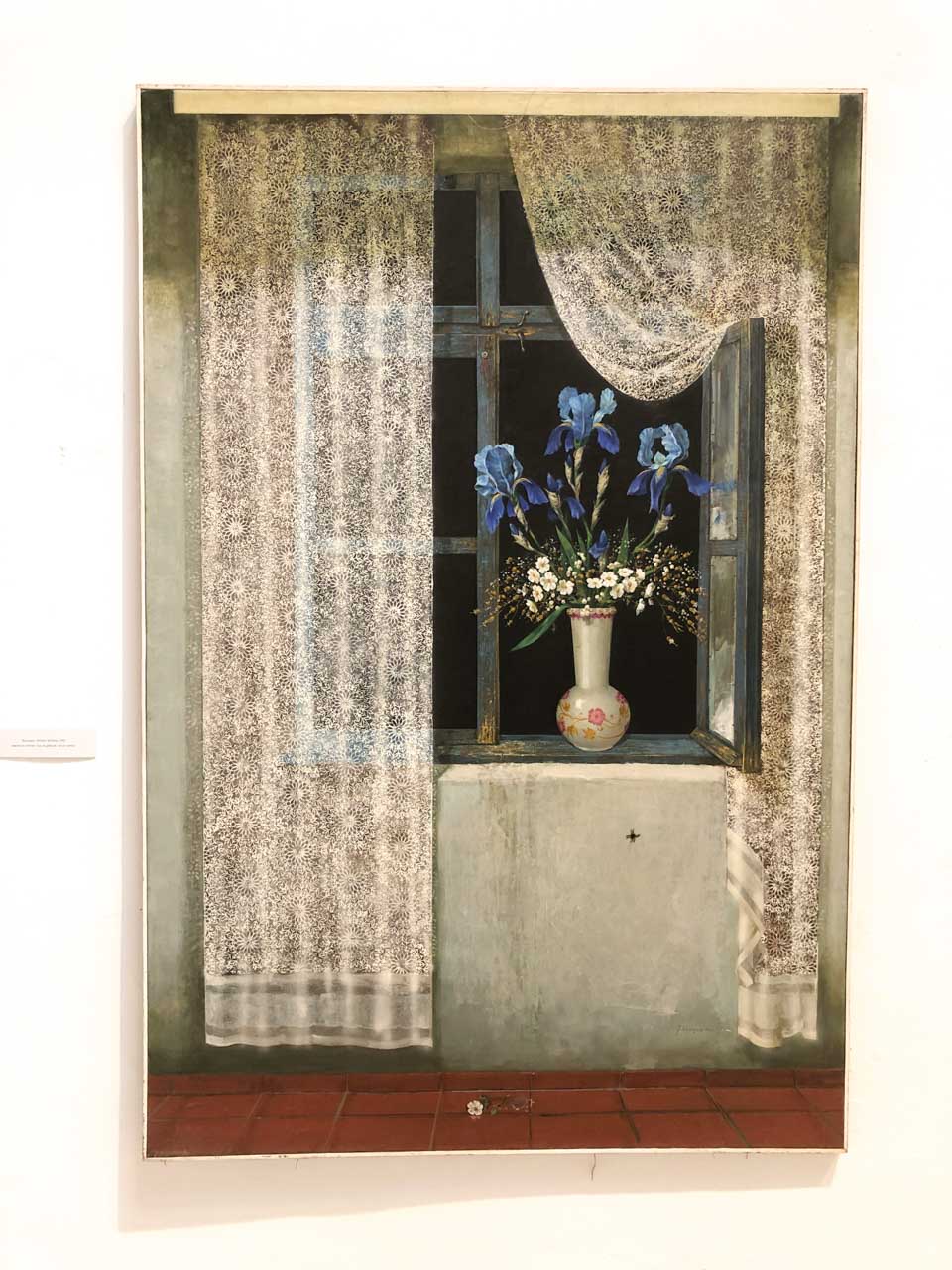
Even if you’re not an art connoisseur, I’d highly recommend adding this one-of-a-kind place to your Skopje itinerary. I mean, how often can you say you contemplated art inside an actual bathhouse?
3. Learn about the country’s road to independence at the Museum of the Macedonian Struggle
Next up in our quest to hide from the heat, we decided to visit the Museum of the Macedonian Struggle, which cost 300 MKD (around £4.30/€4.90). It covers the period from the beginning of the resistance movement against the Ottoman rule to 1991 when North Macedonia became an independent country.

You can tell a lot of effort and creativity went into making the exhibition as engaging as possible, with various interactive displays spread across 3 floors. You even end your tour in front of the actual copy of the Declaration of Independence from Yugoslavia.

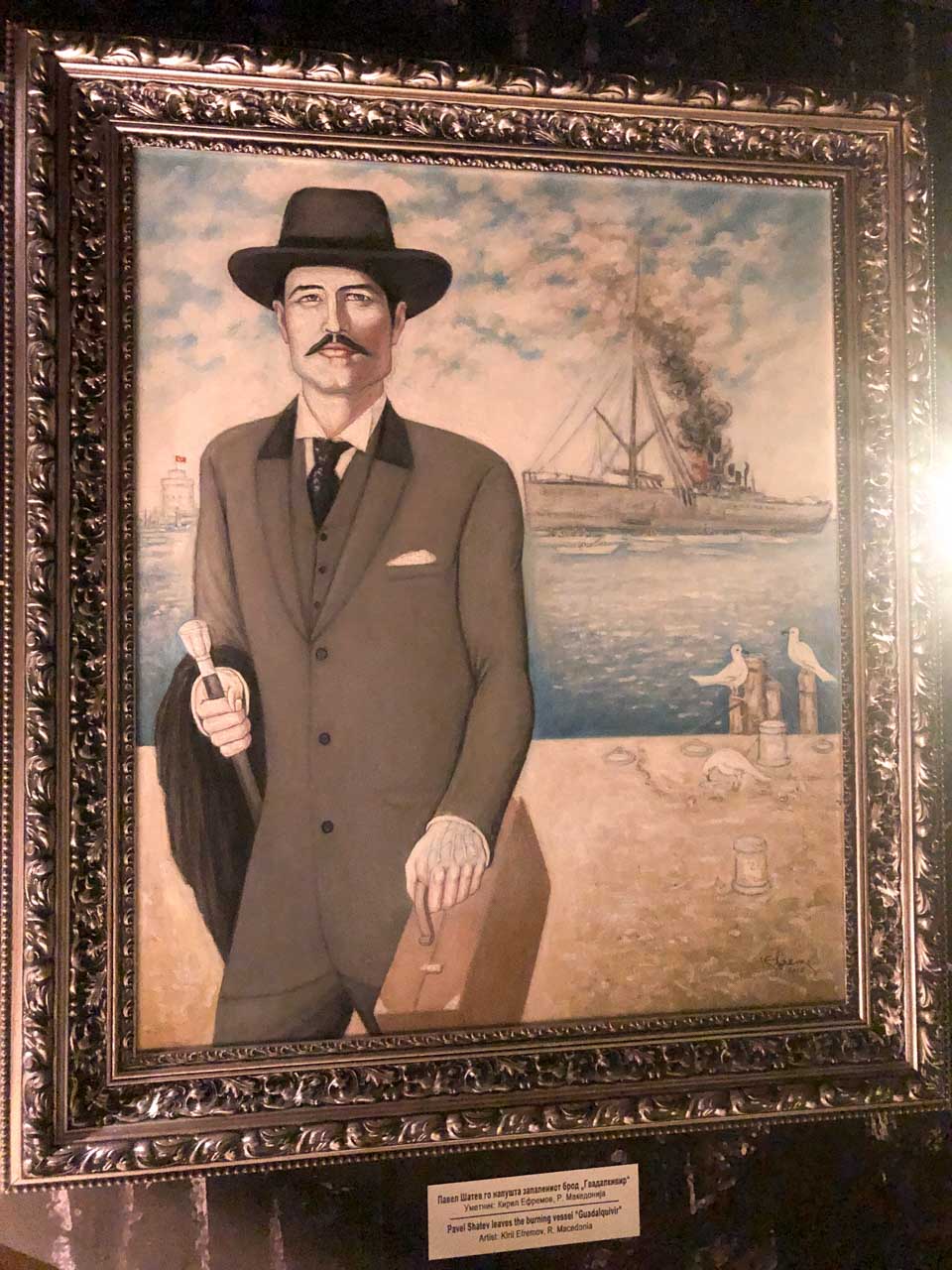
My only real concern was that while the museum offers a very comprehensive overview of the history of North Macedonia, it provides little context for those not already familiar with it. For instance, they referenced an organisation by name, but did not offer an explanation of what it was or what it did, making the entire section hard to follow. That said, if you’re the kind of person who enjoys doing your own research, you’ll find this museum is a great starting point. A guided tour might also be a great idea to make more sense of what you’re looking at.
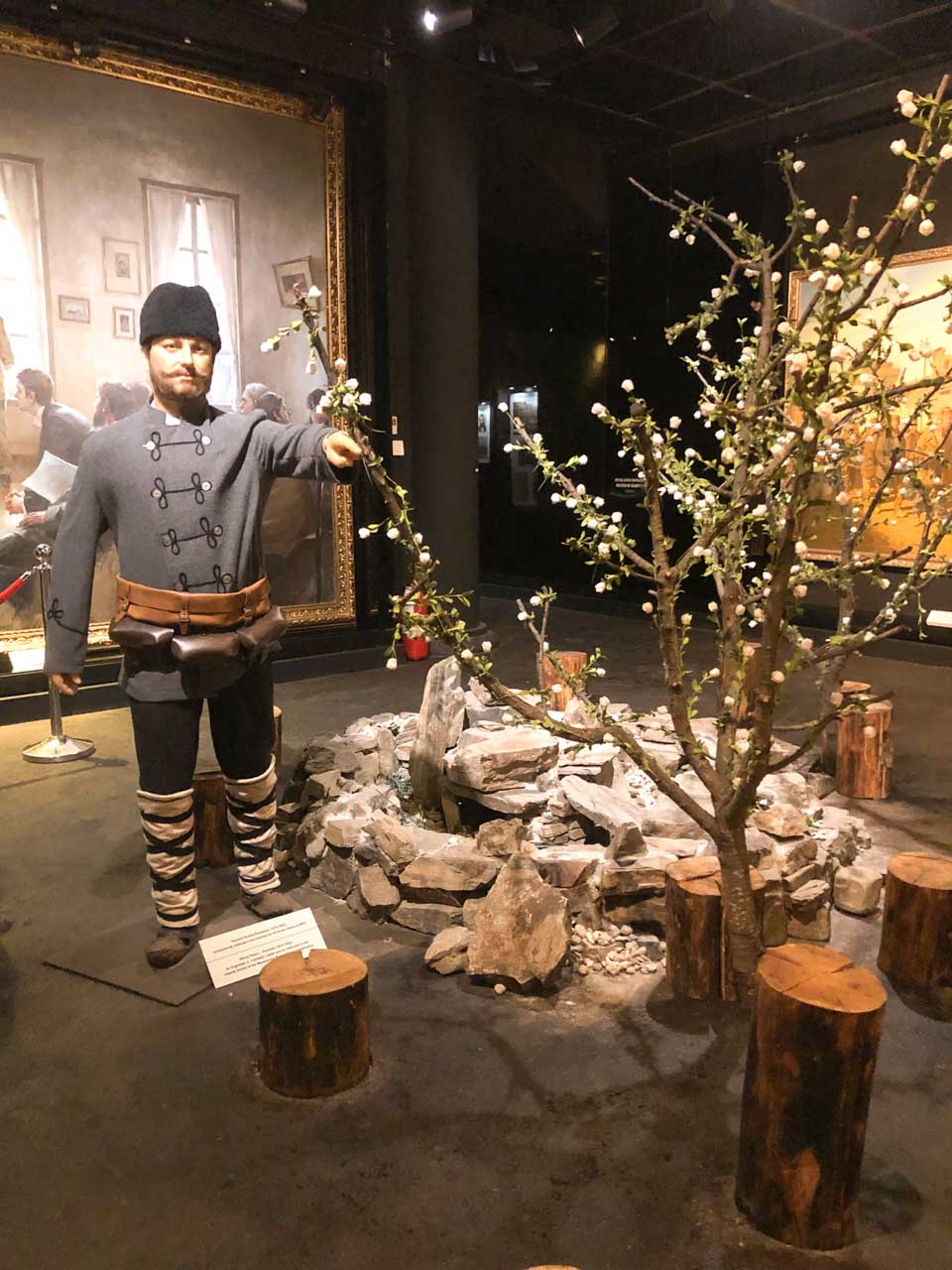
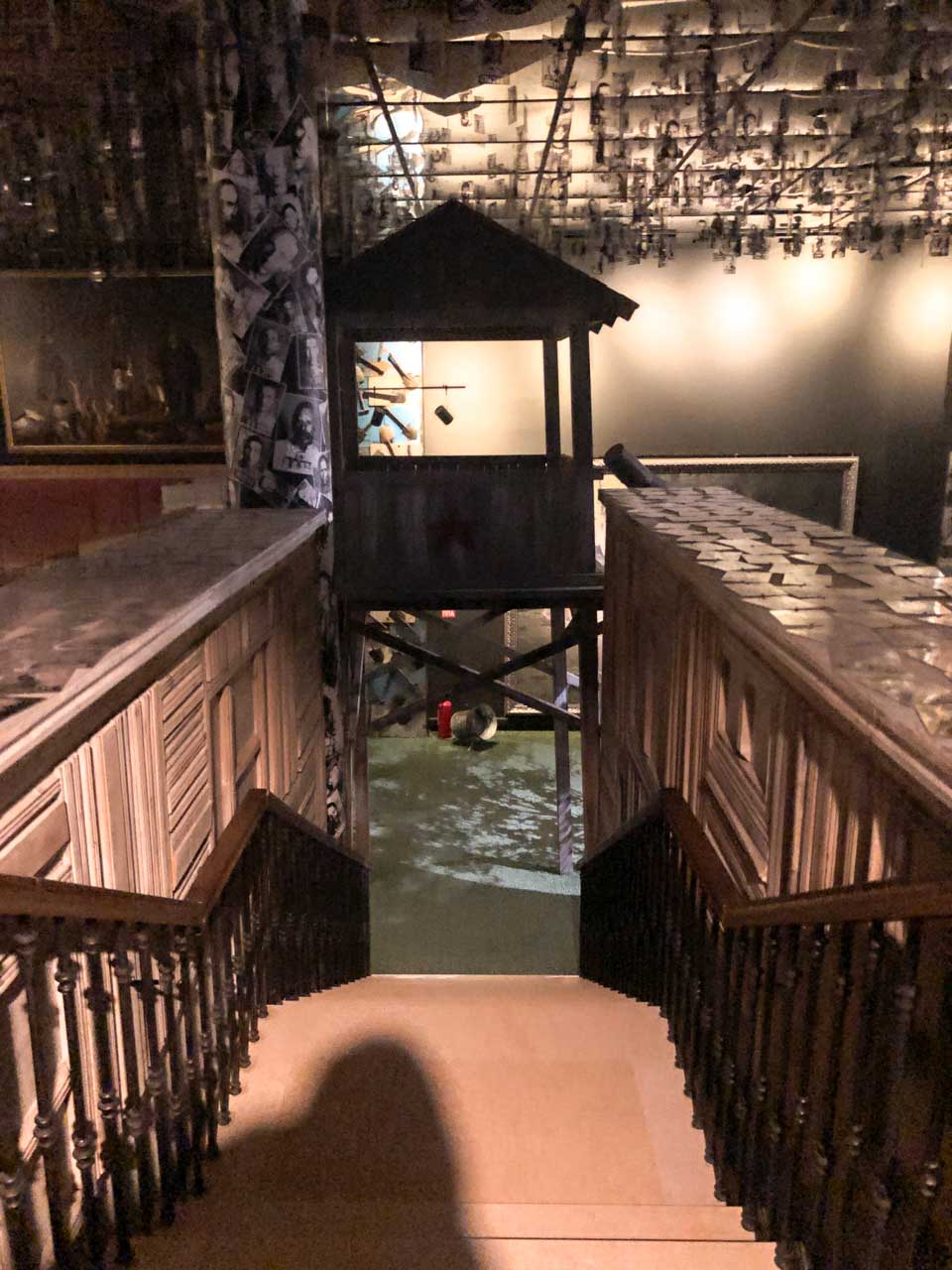
4. Step back in time at Skopje’s Old Bazaar
As Skopje’s trade and commercial hub since the 12th century, the Old Bazaar is the perfect place to immerse yourself in the cultural fabric of the city. With its winding cobblestone streets and colourful shop fronts, it’s a must-see destination for anyone visiting Skopje.

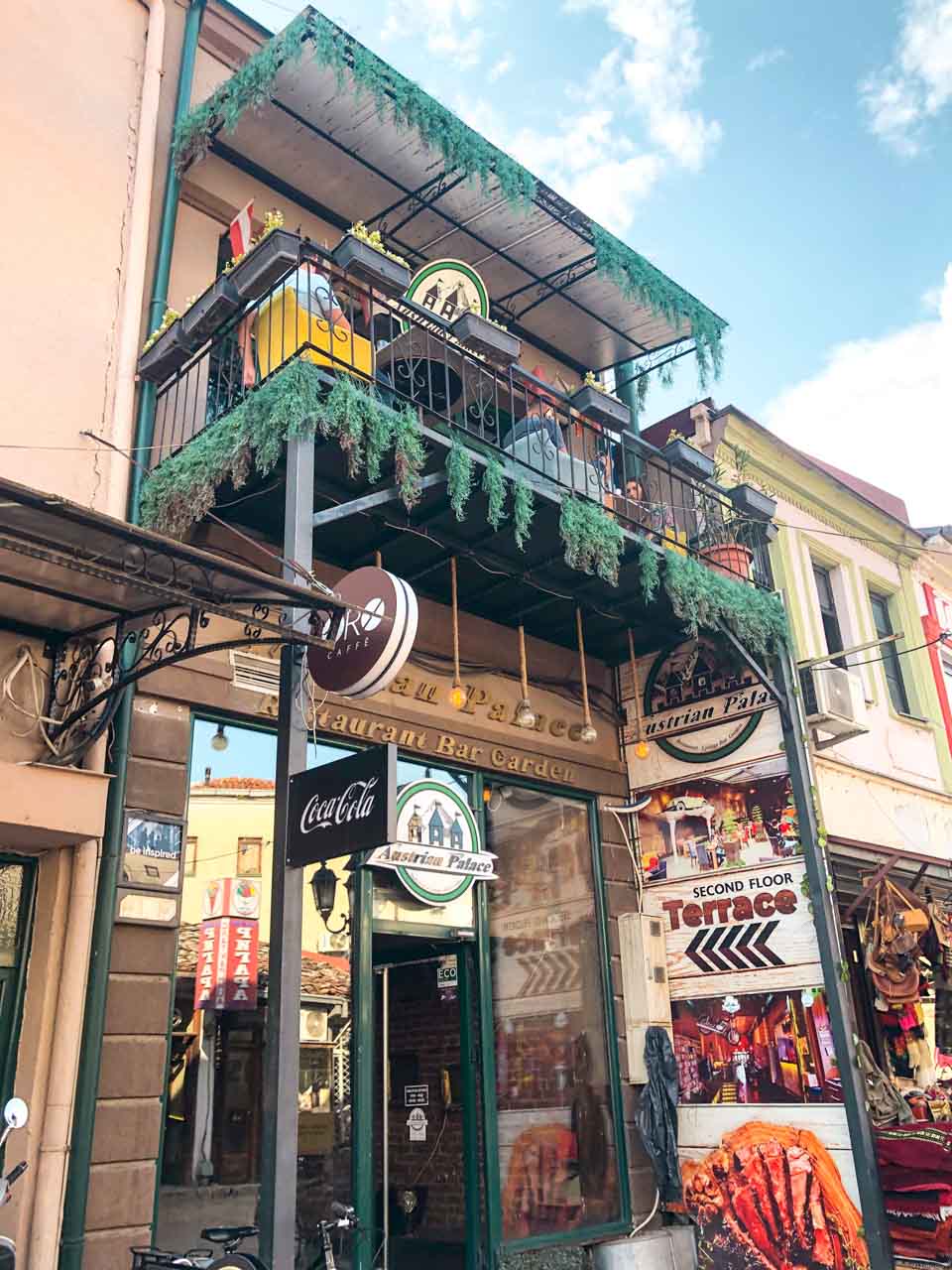
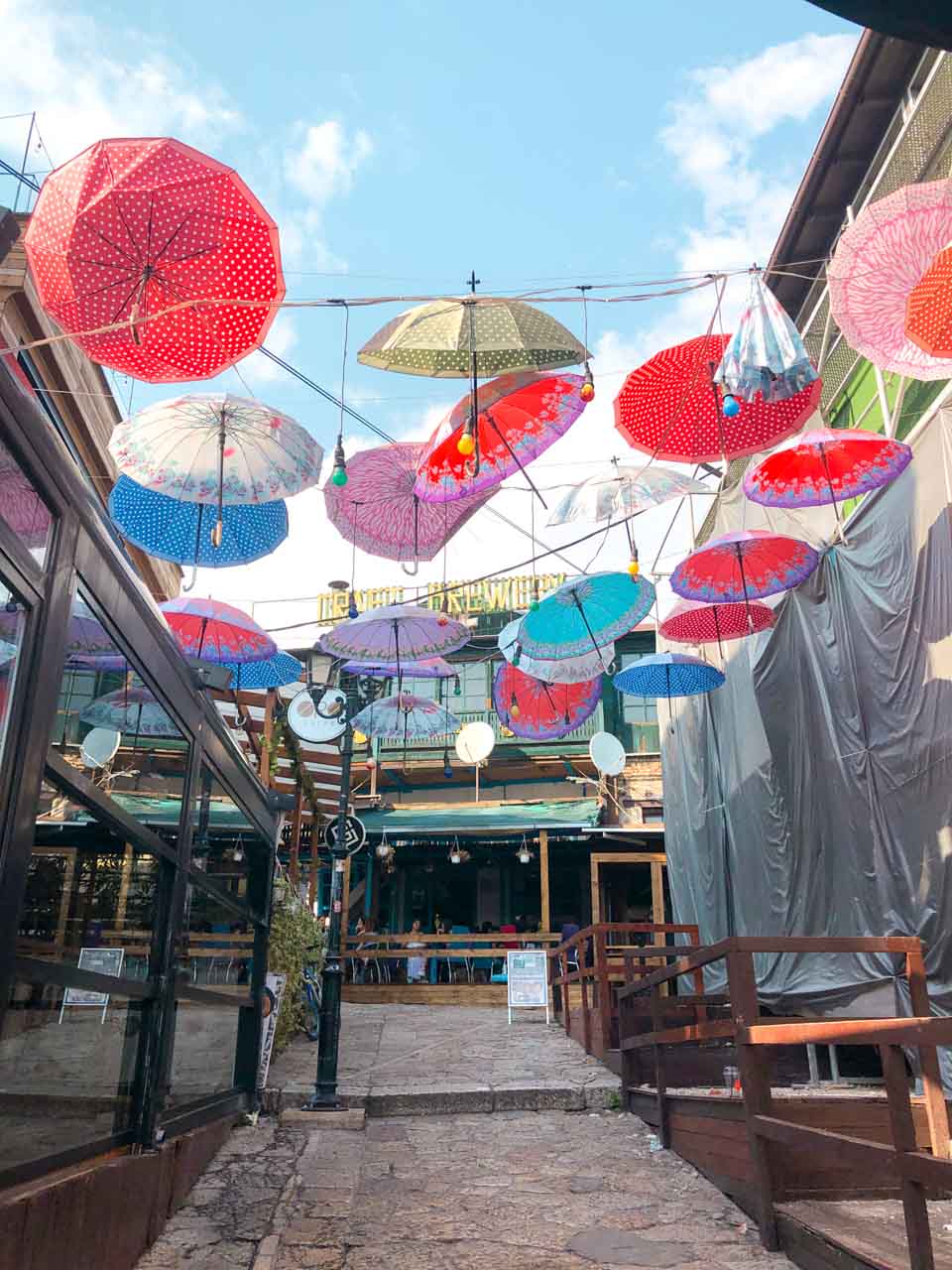
From shops selling traditional Macedonian handicrafts to modern craft breweries and restaurants, you can truly find anything your heart desires. Unfortunately, there are also many shops selling cheap Chinese goods, so you need to be aware of where you spend your money.
Aside from its role as a marketplace, Skopje’s Old Bazaar is also a place of great cultural importance where you can find remains of Byzantine architecture, the former Suli Han caravanserai where merchants once rested during their travels, or the historic Mustafa Pasha Mosque.
5. Try local flavours at Destan
When you’re in the Old Bazaar area, I’d also recommend stopping by Destan for a quick bite. We came here from our friend’s recommendation who, in turn, saw this place in a local food critic’s vlog.
When I asked to see the menu, the waiter told me there wasn’t one. The only thing they sell is cevapcici with a side of pita bread, onion, and peppers. For a portion of 10 cevapcici and a soft drink, I paid 360 MKD (around £5.20/€5.80), which is a bit on the pricey side, but acceptable.

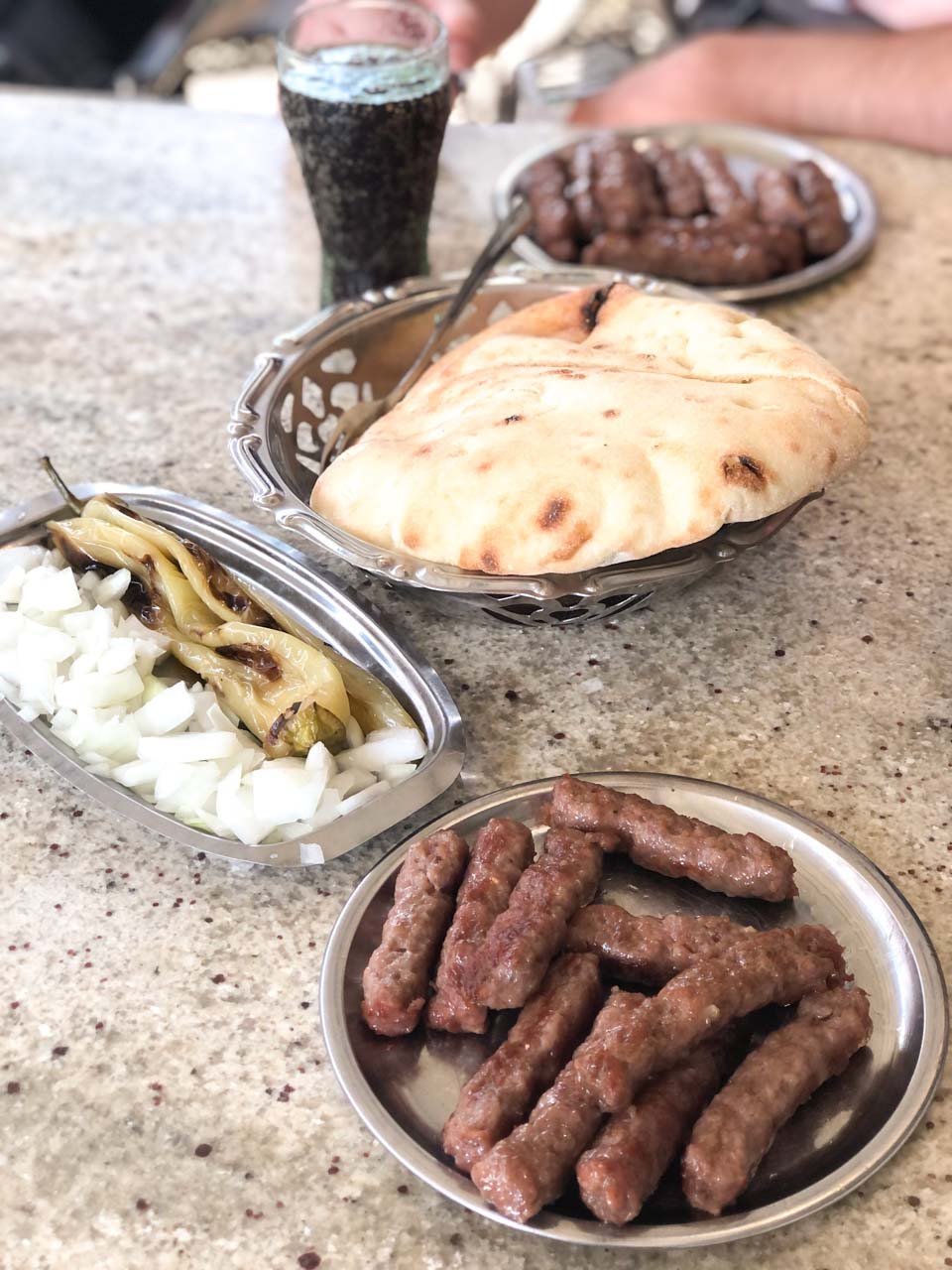
If you’ve previously been to the Balkans, this dish is unlikely to surprise you. It has become a menu staple in many Balkan countries, including Bosnia and Herzegovina, Serbia, or Montenegro. In our experience, the main thing that varied across different restaurants were the sides, as some serve it with a side of ajvar, a roasted red pepper dip, or kajmak, a creamy cheese spread. Another traditional way is to have it with some yoghurt.
Still, trying the Destan version is a must in Skopje, even if it’s mostly for comparison purposes! They don’t serve any alcohol, but you can try some local beer right around the corner at Snoshti Minav.
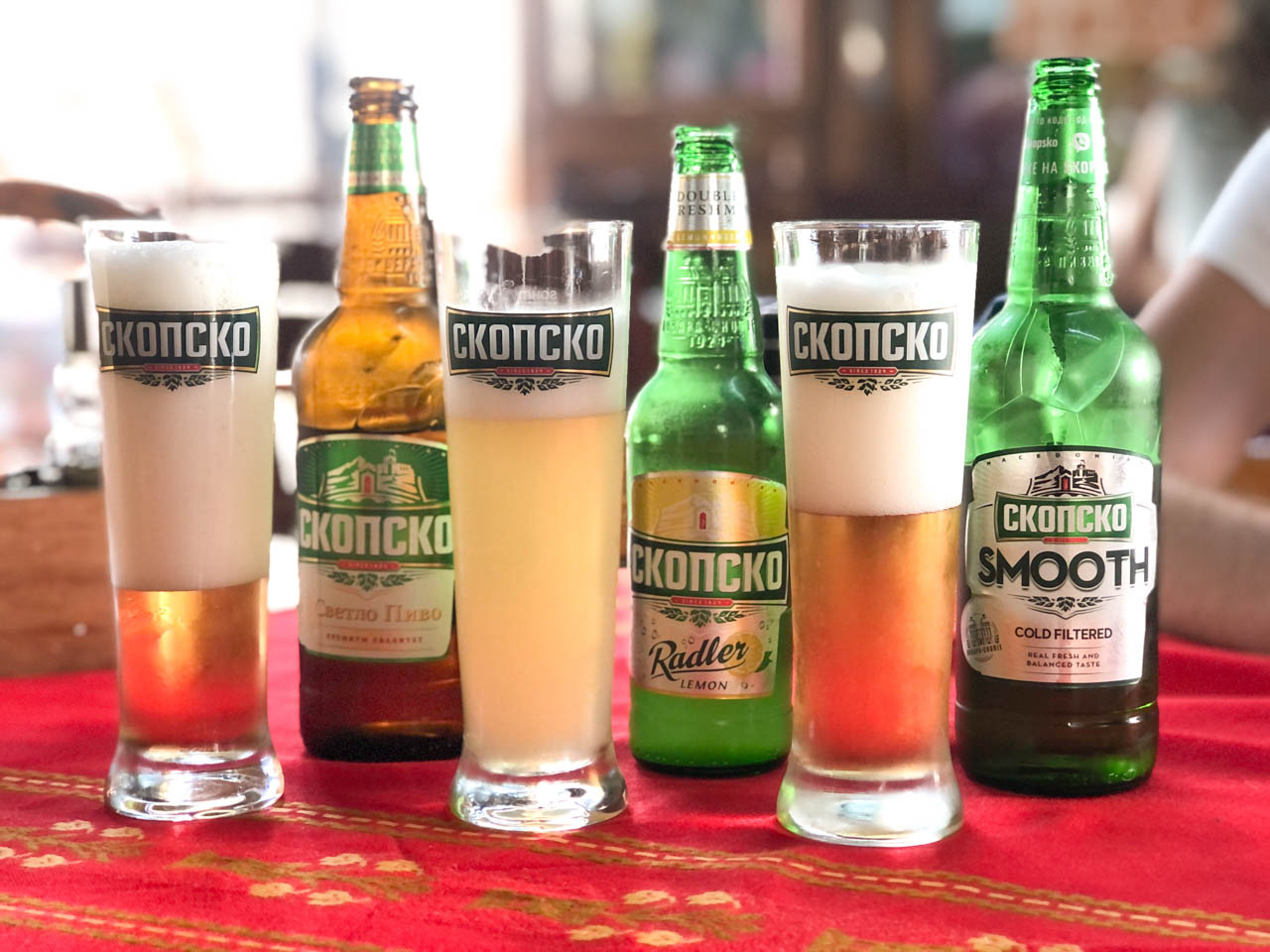
6. Taste quality microbrews at Craft Brewery Temov | Kolektiv
The next day, we decided to visit North Macedonia’s first craft brewery. Interestingly, they produce the only Macedonian beer that does not contain preservatives, pasteurisation, artificial colours or flavours. So, if you enjoy quality brews, Craft Brewery Temov (aka the Old Town Brewery) is definitely the one place you shouldn’t miss in Skopje!
Unfortunately, when we were there, the only types of beer available on tap were more traditional ales and pilsners – no fruit beers or seasonal craft brews. The good thing is that you can also try some local dishes with your beer. I went for the Pastrmajlija, which is a Macedonian-style pizza with sliced meat cubes and peppers. It’s pretty similar to a Turkish pide, only with fewer ingredients and no sauce. While I much prefer traditional pizzas, I really enjoyed getting to try another Macedonian dish during our time in Skopje.

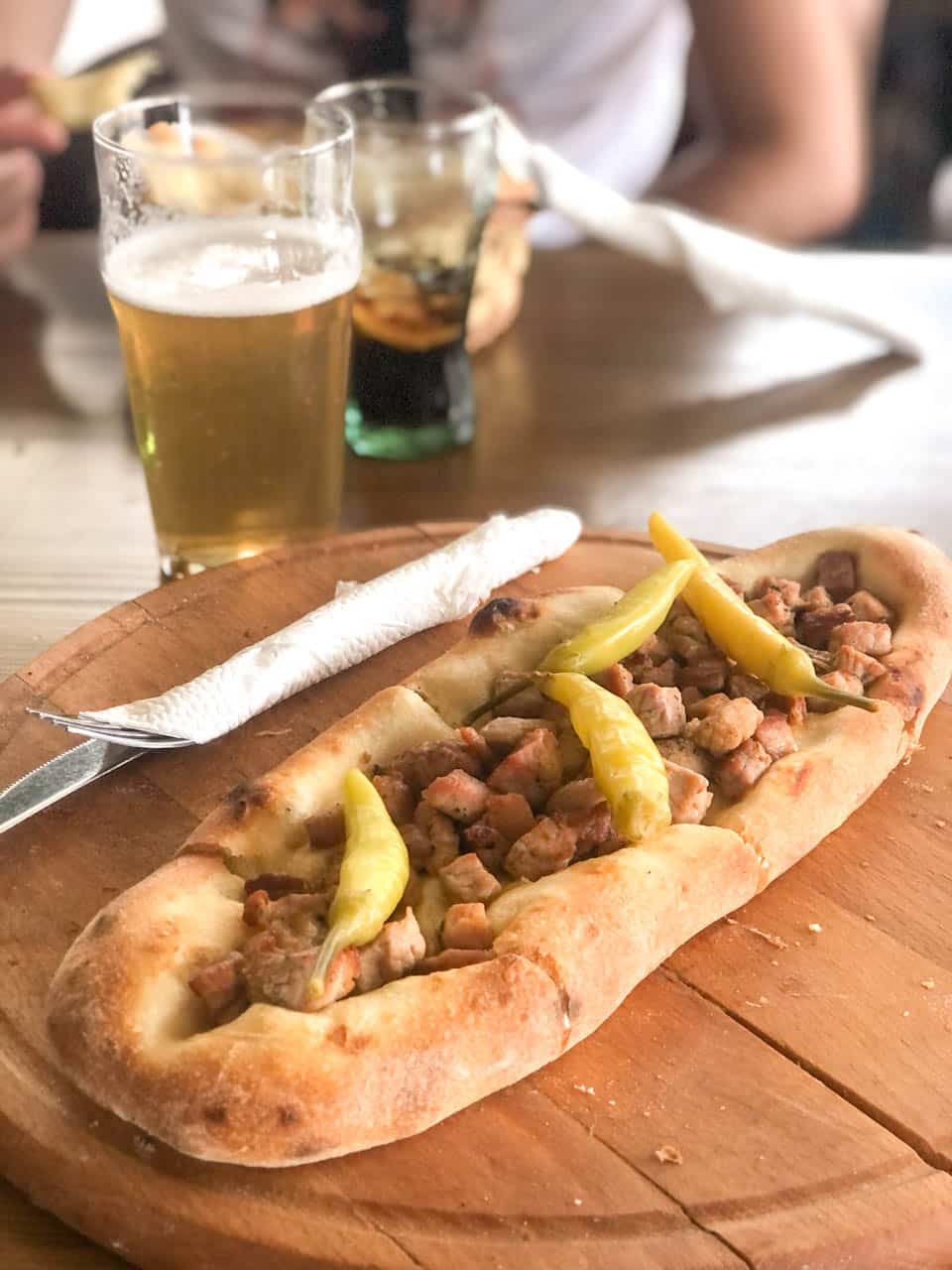
The restaurant we went to is the Old Town Brewery’s second branch located right in the heart in the city, on Macedonia Square. You can find the original location in the Old Bazaar. From what I read online, they have completely different beer menus, so if you have more time, it might be worth checking out both.
7. Have a Parisian moment at Porta Macedonia
As you turn left from Macedonia Square, I wouldn’t blame you for thinking you somehow entered a magic portal that transported you all the way over to Paris. Porta Macedonia, Skopje’s grand triumphal arch, is another majestic structure built as part of the Skopje 2014 project by the author of the Warrior on a Horse statue.
And, similarly to the legendary horseback statue, it also landed Macedonians in hot water with the Greeks. To celebrate 20 years of Macedonian independence, it depicts various scenes from the country’s history, including images of historical figures like Alexander the Great. This caused the Greek Foreign Ministry to file a formal complaint.
But, it turns out some locals are just as outraged due to the whopping sum of €500 million it allegedly cost to build Porta Macedonia. Inside, you can find a souvenir shop and a lift providing access to the roof, which was built with the purpose of hosting wedding ceremonies. I wouldn’t necessarily say it was worth the money, but it certainly makes for a great photo backdrop! What do you think?

8. Climb to the top of the Skopje Fortress
For a panoramic view of Skopje, I’d recommend climbing to the top of the Skopje Fortress, also known as Kale. The original fortress was built in the 6th century when Macedonia was a part of the Byzantine Empire. However, during the recent excavations in 2006 and 2007, archeologists discovered clay ornaments and woodwind instruments dating as far back as 3000 BC!

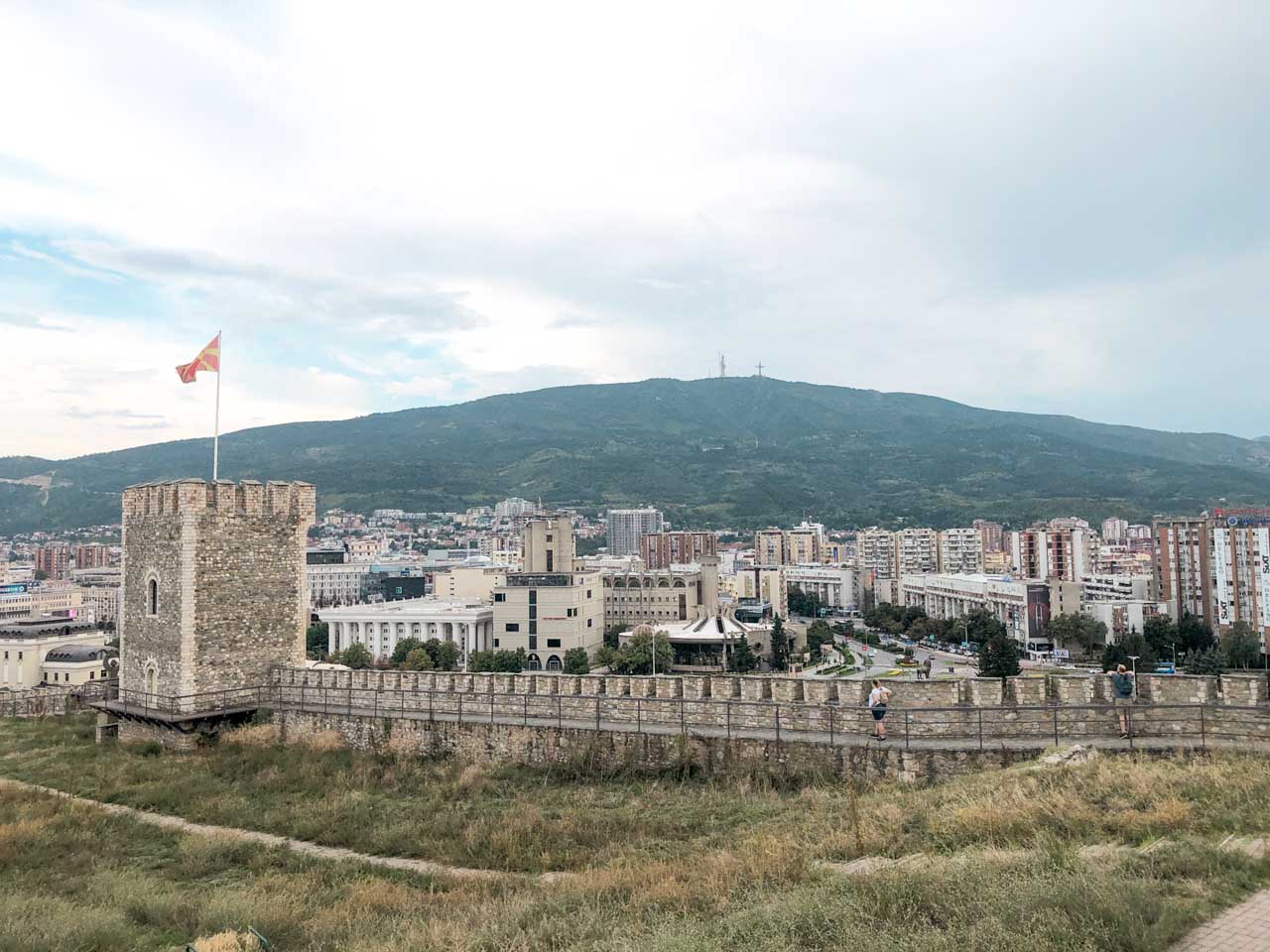
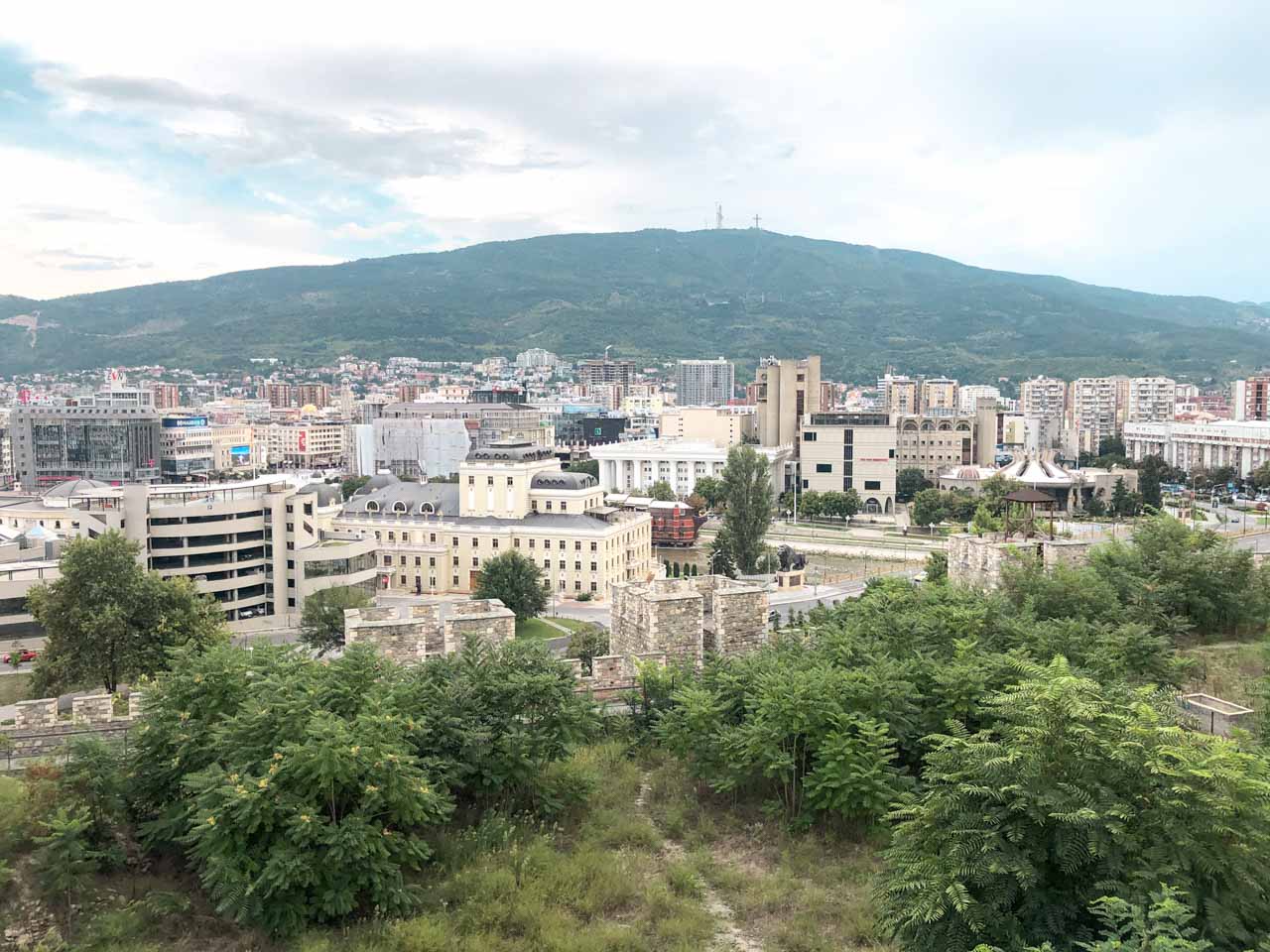
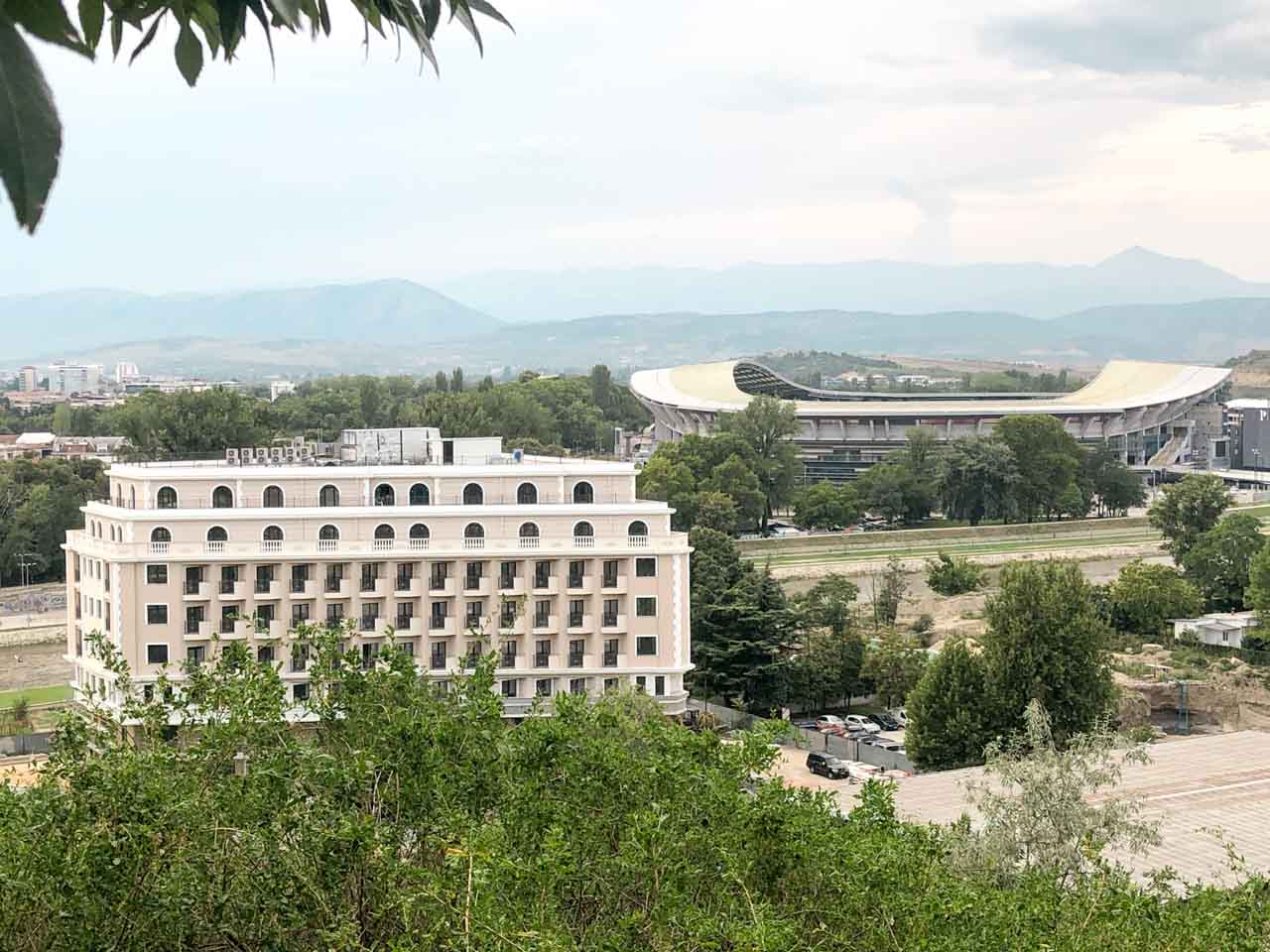
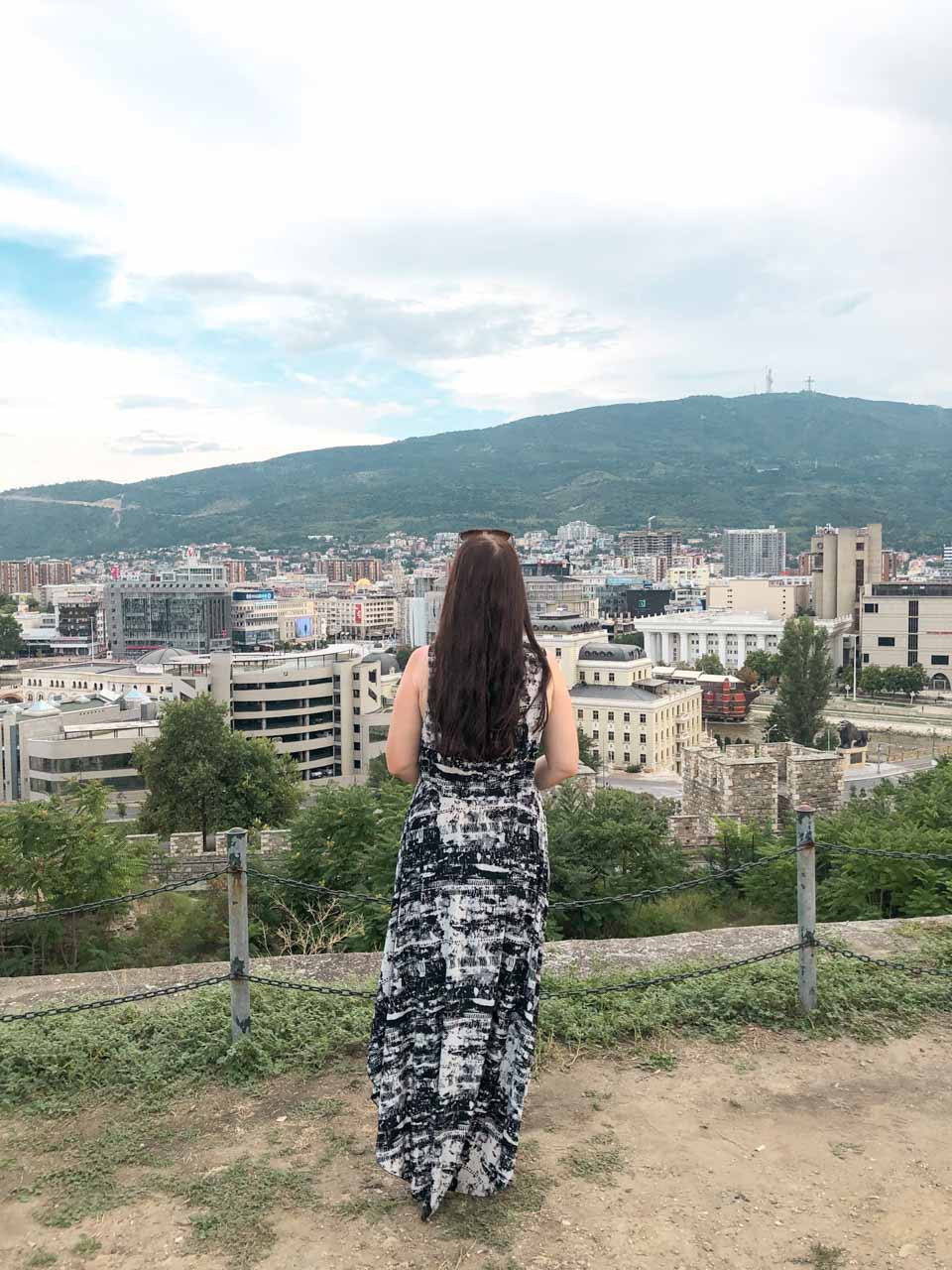
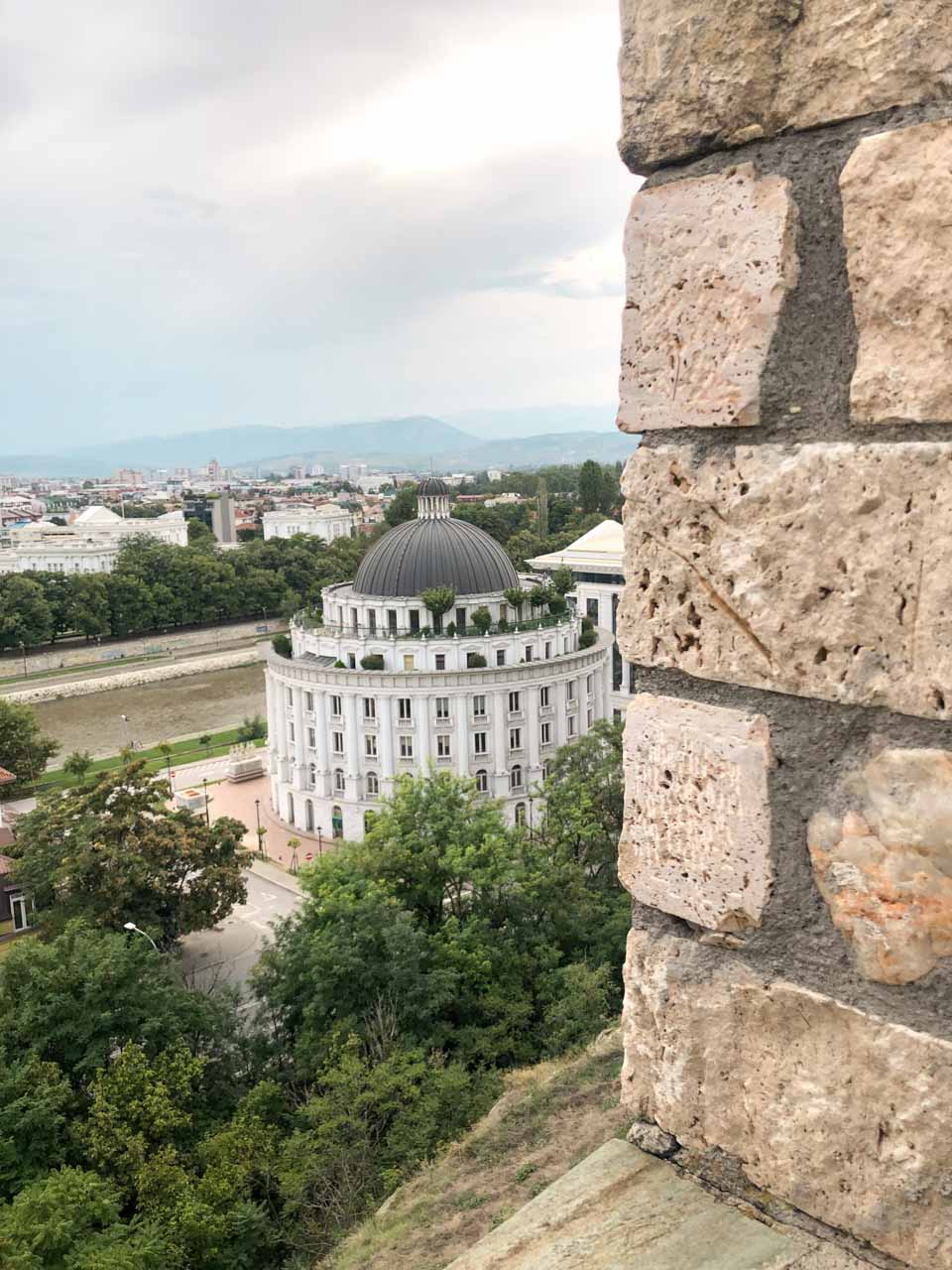
Admission to the fortress is free, but I must warn you that its condition isn’t great. Sadly, it’s been neglected and fell into disrepair, with parts reclaimed by nature, towers sealed off, heaps of rubble, and litter strewn about the site. I hope to see it fully restored one day – for now, it’s a cool place to visit for the city views, especially at sunset.

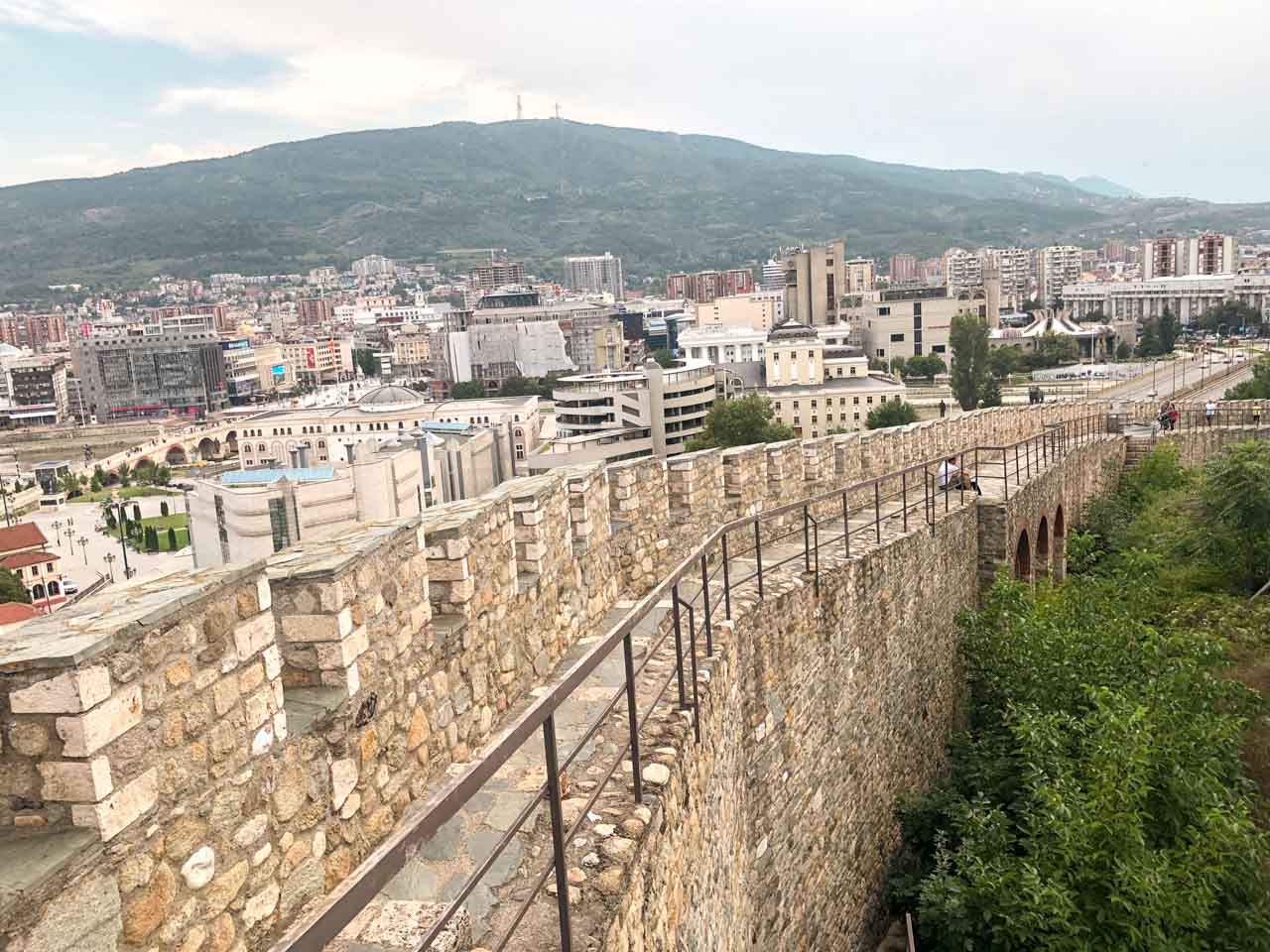
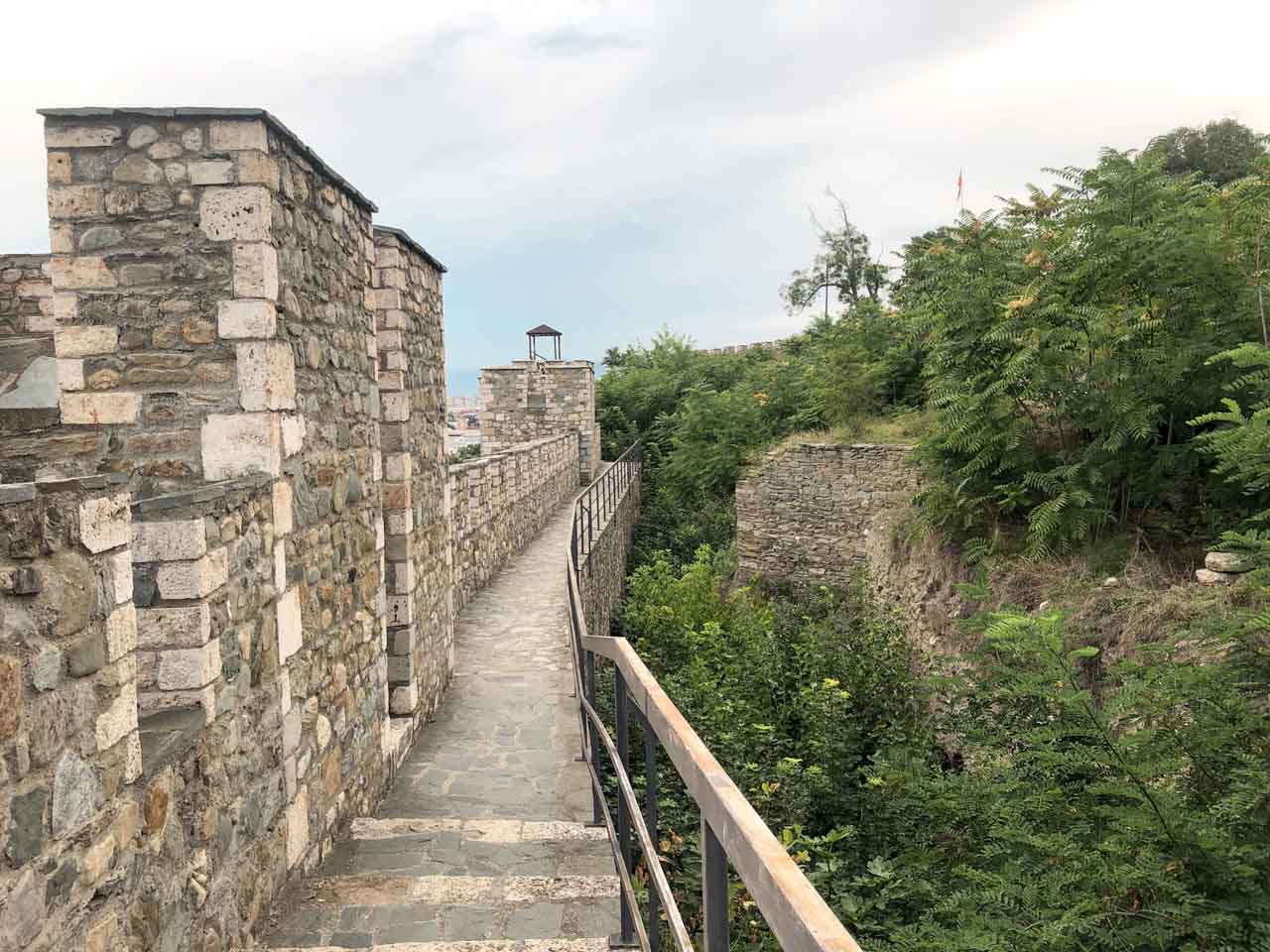
9. Discover the beauty of Skopje’s Art Bridge
The Art Bridge is much more than just a crossing over the Vardar River; it’s a symbol of the city’s commitment to culture and the arts. This stunning pedestrian bridge features 29 sculptures of famous Macedonian artists and musicians.
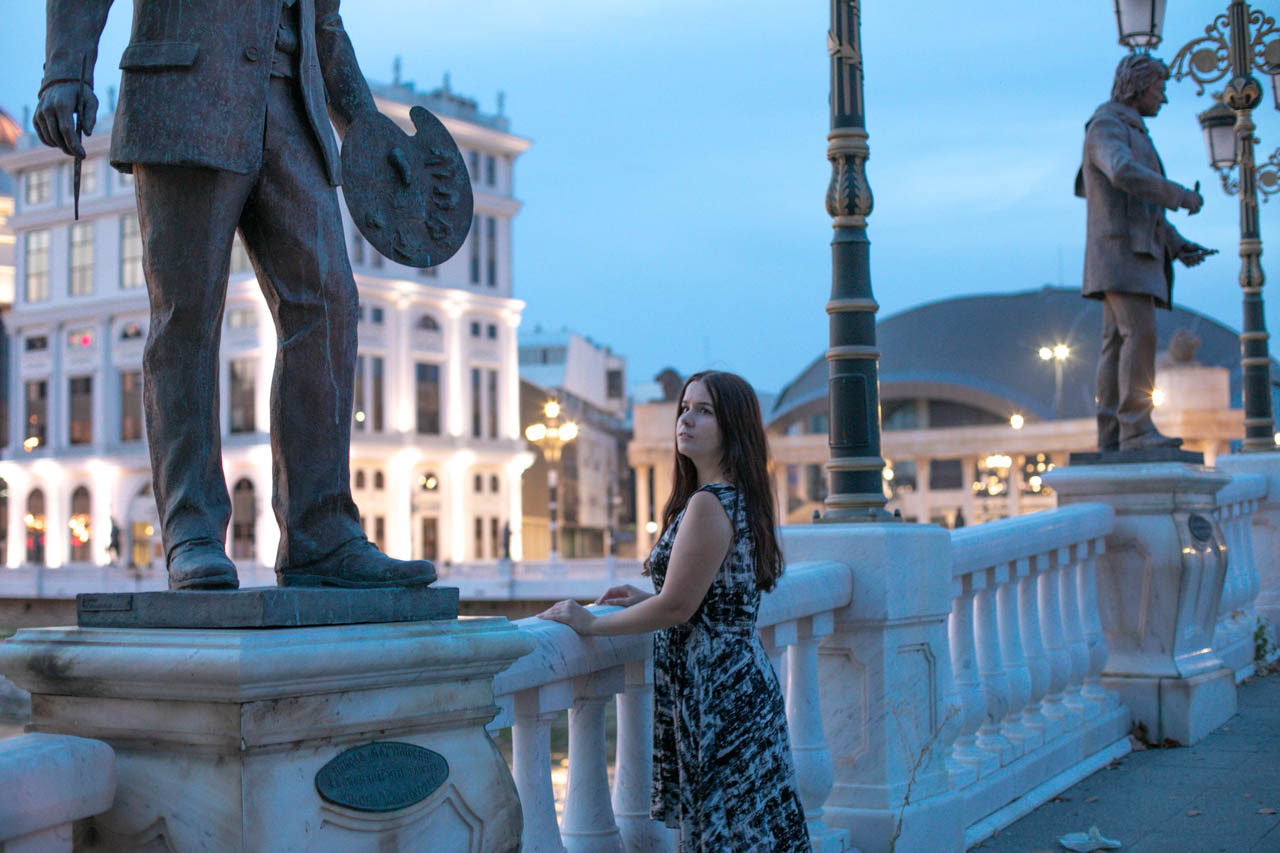
While a lot of the city’s renovations as part of the Skopje 2014 project are downright tacky, the Art Bridge is a true architectural marvel. It was hands down my favourite view in all of Skopje – absolutely mesmerising at any time of day, but particularly at sunset. The bridge leads to the Archeological Museum of the Republic of Macedonia and the Macedonian Philharmonic, both of which might be worth a visit if you have more time.

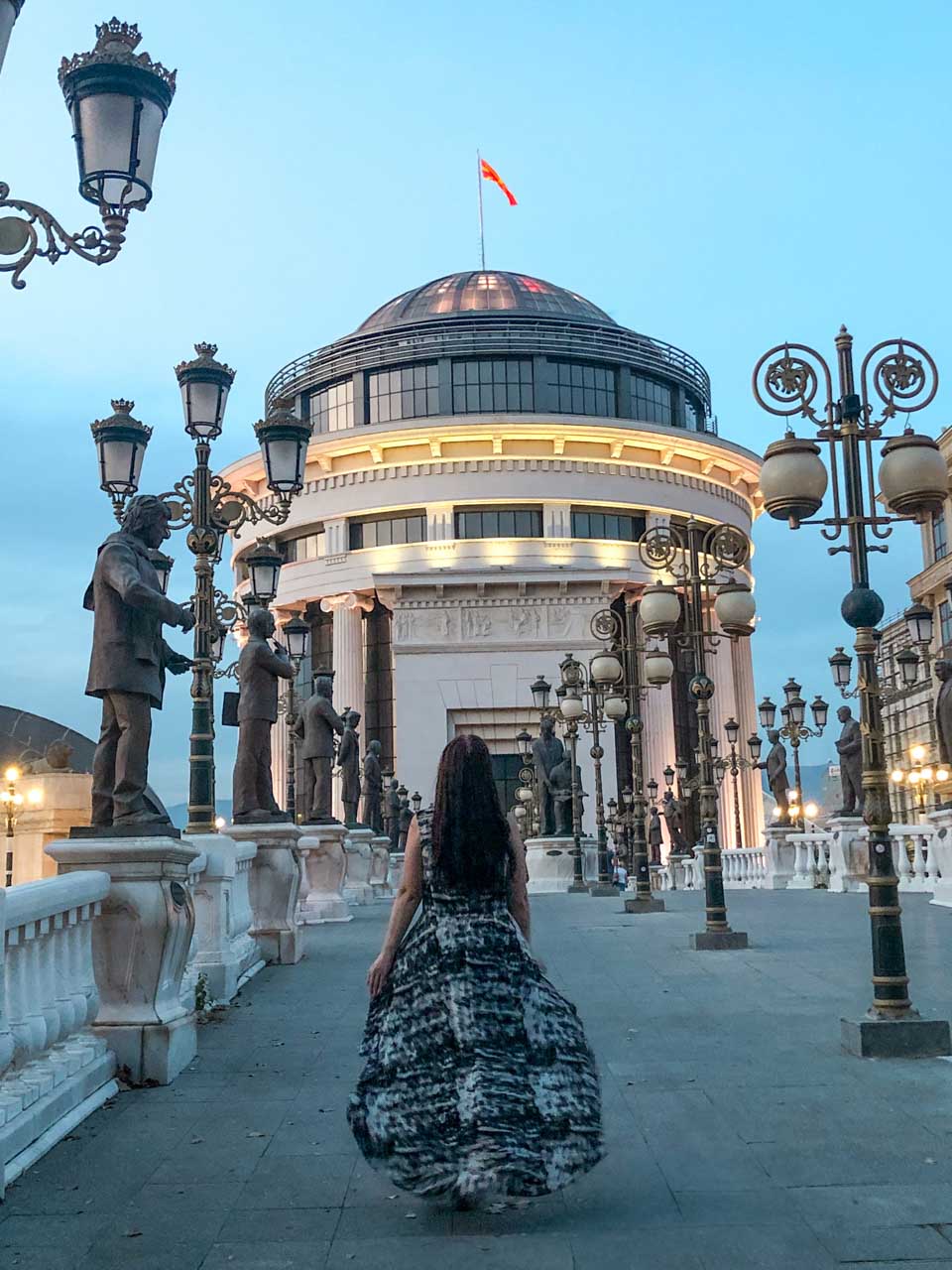
Its more famous counterpart is the 15th-century Stone Bridge that withstood several earthquakes and was nearly sent to the river’s bottom when the Nazis placed explosives on it back in 1944. Thankfully, they called off the detonation at the last minute. Thanks to a recent refurbishment project, the bridge remains intact to this day. It didn’t amaze me nearly as much as the Art Bridge did, but it’s a must-see symbol of the city.
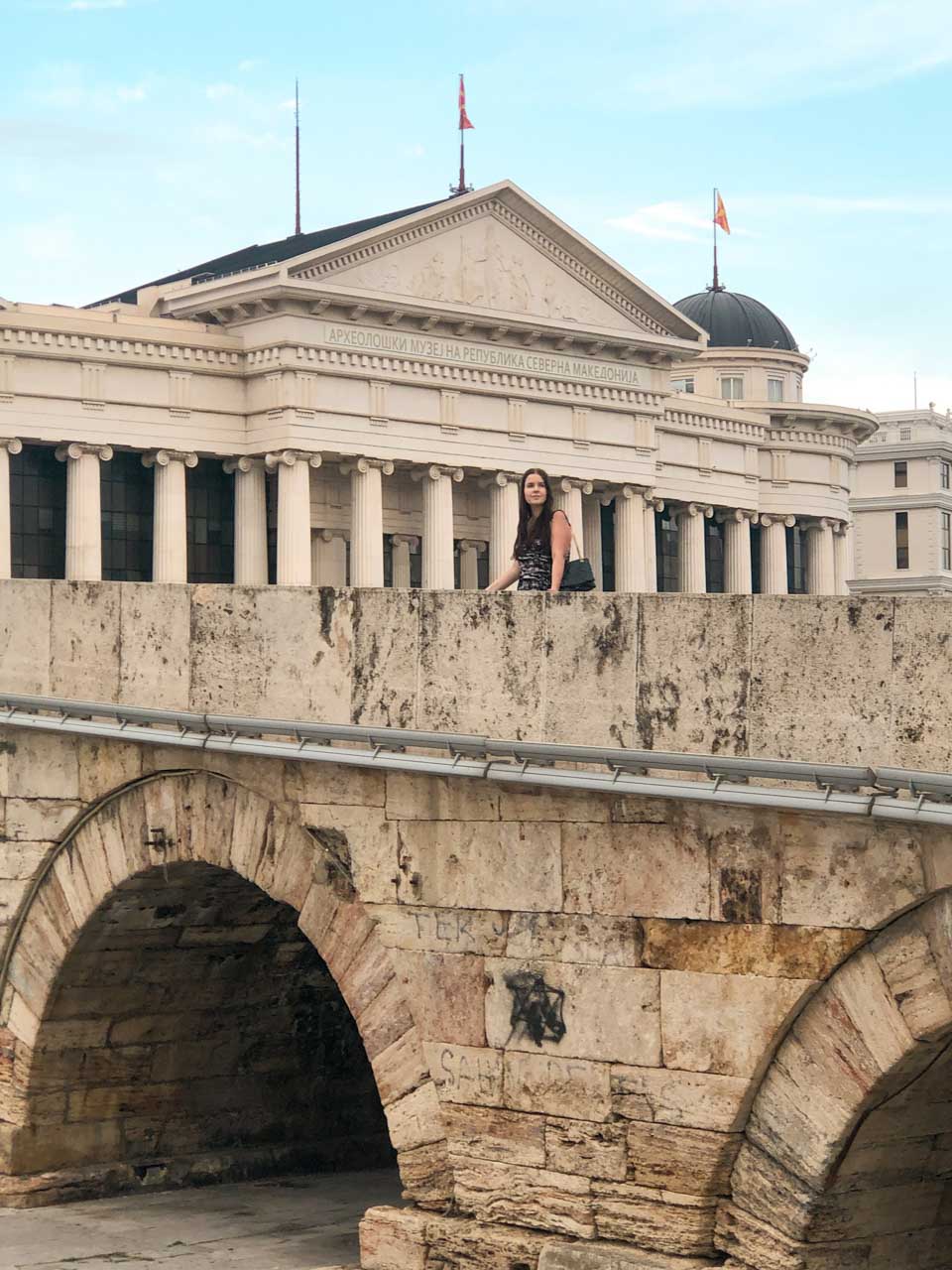
10. Get your creative juices flowing at Public Room
We stumbled upon Public Room by complete accident, looking for a place to have brunch on our first day in the city. As it was within walking distance from our hotel, we decided to give it a go – and we hit the jackpot!
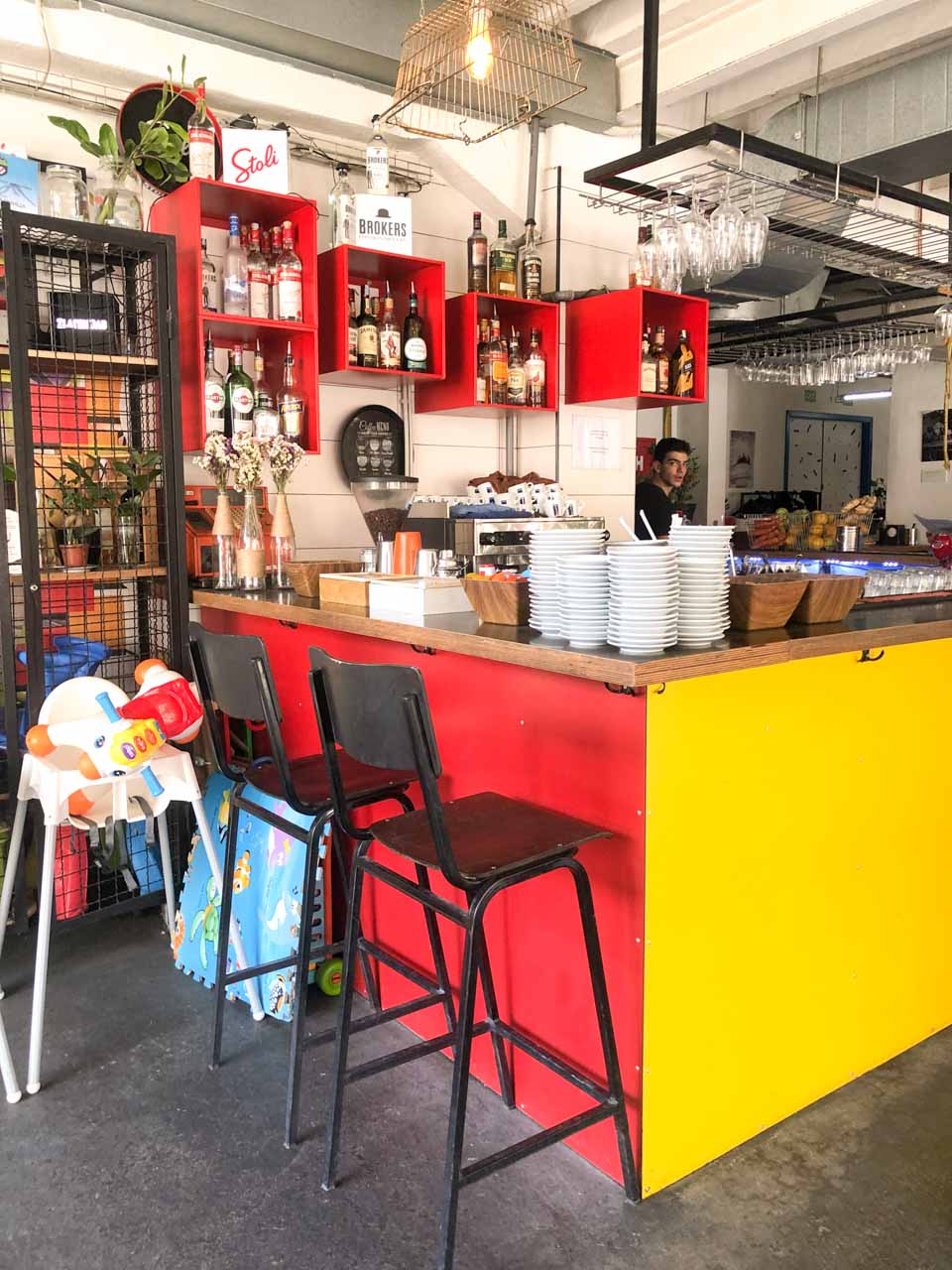
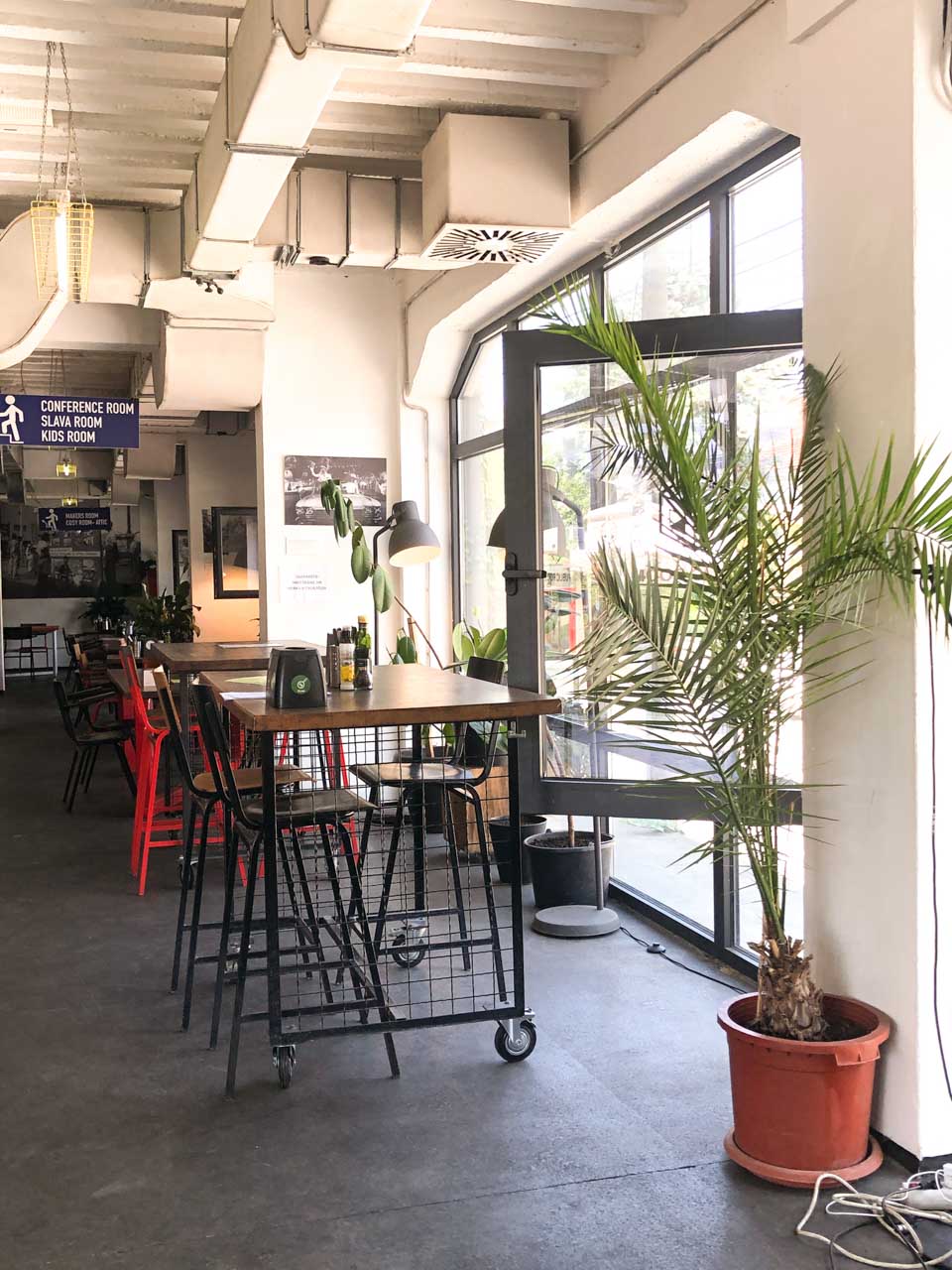
From classics like French toast and egg omelettes to healthier options like oats with yoghurt and fruit or a Peruvian breakfast, it’s the perfect place to fuel up before a day of exploring. In the afternoons, there are also numerous lunch dishes and scrumptious desserts to choose from. Aside from the opportunity to boost our caffeine levels, my favourite thing was the variety of fresh fruit and vegetable smoothies and ginger shots. So much healthy goodness at affordable prices – it’s an absolute must if you find yourself in Skopje!
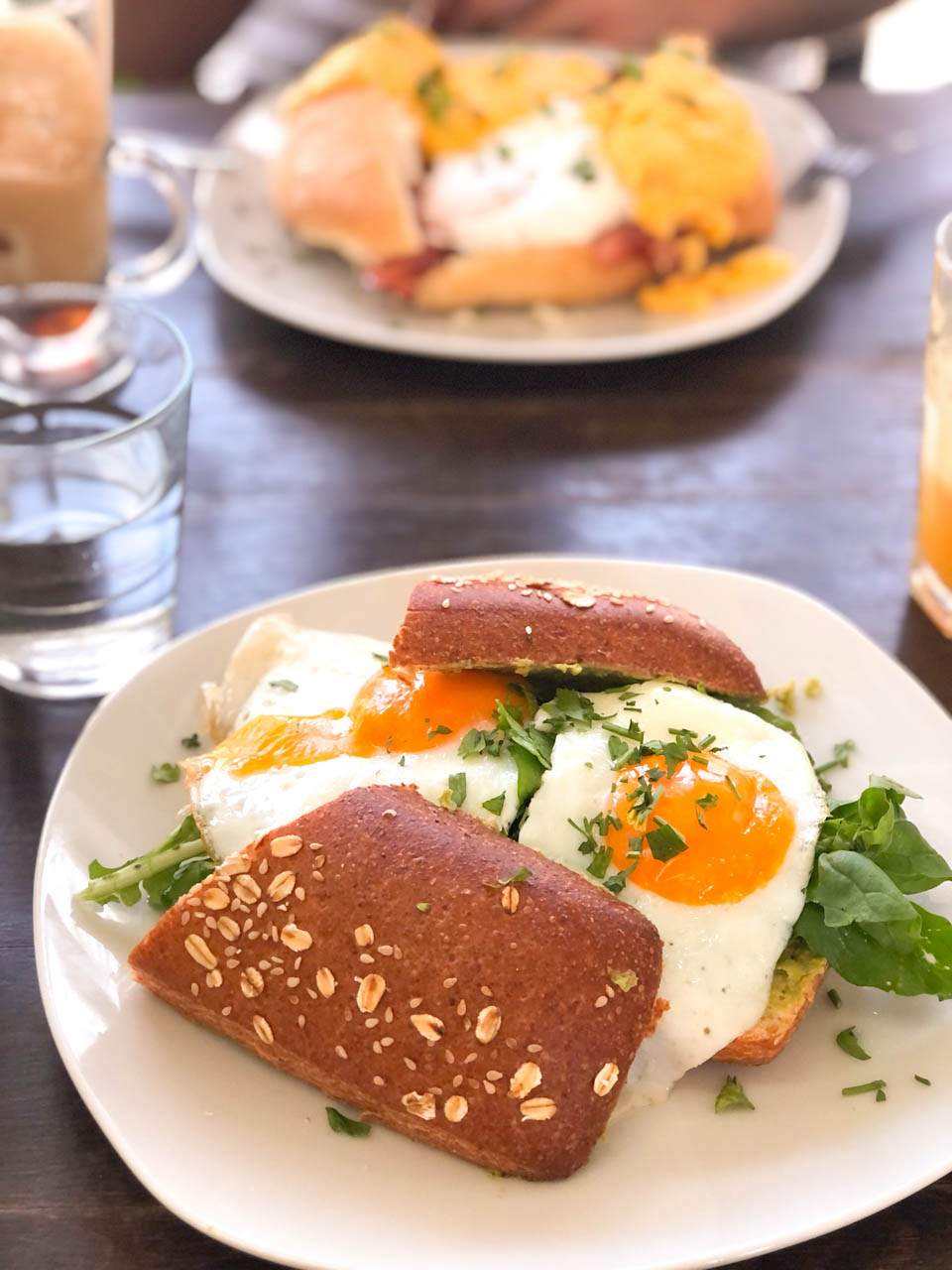
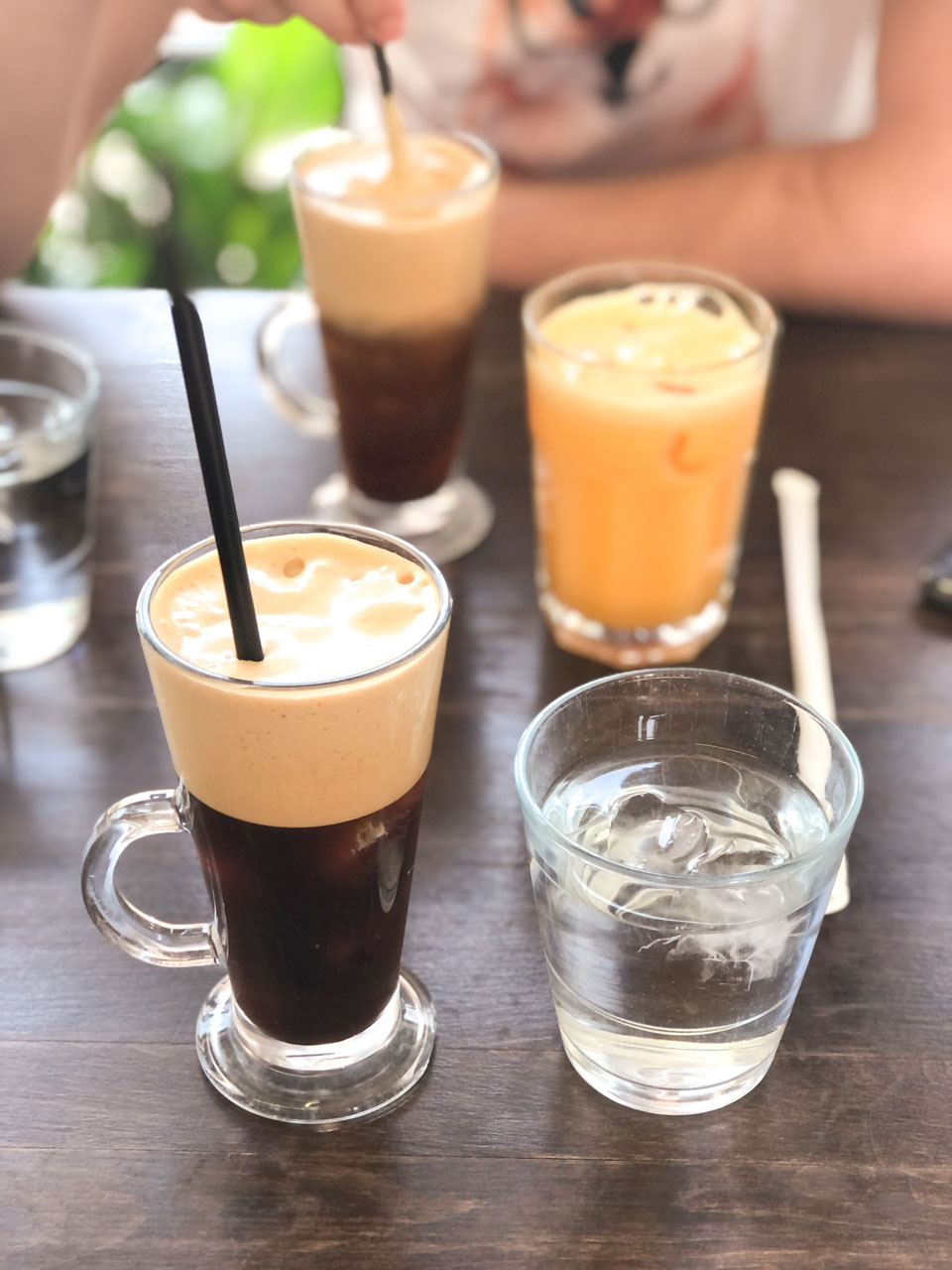
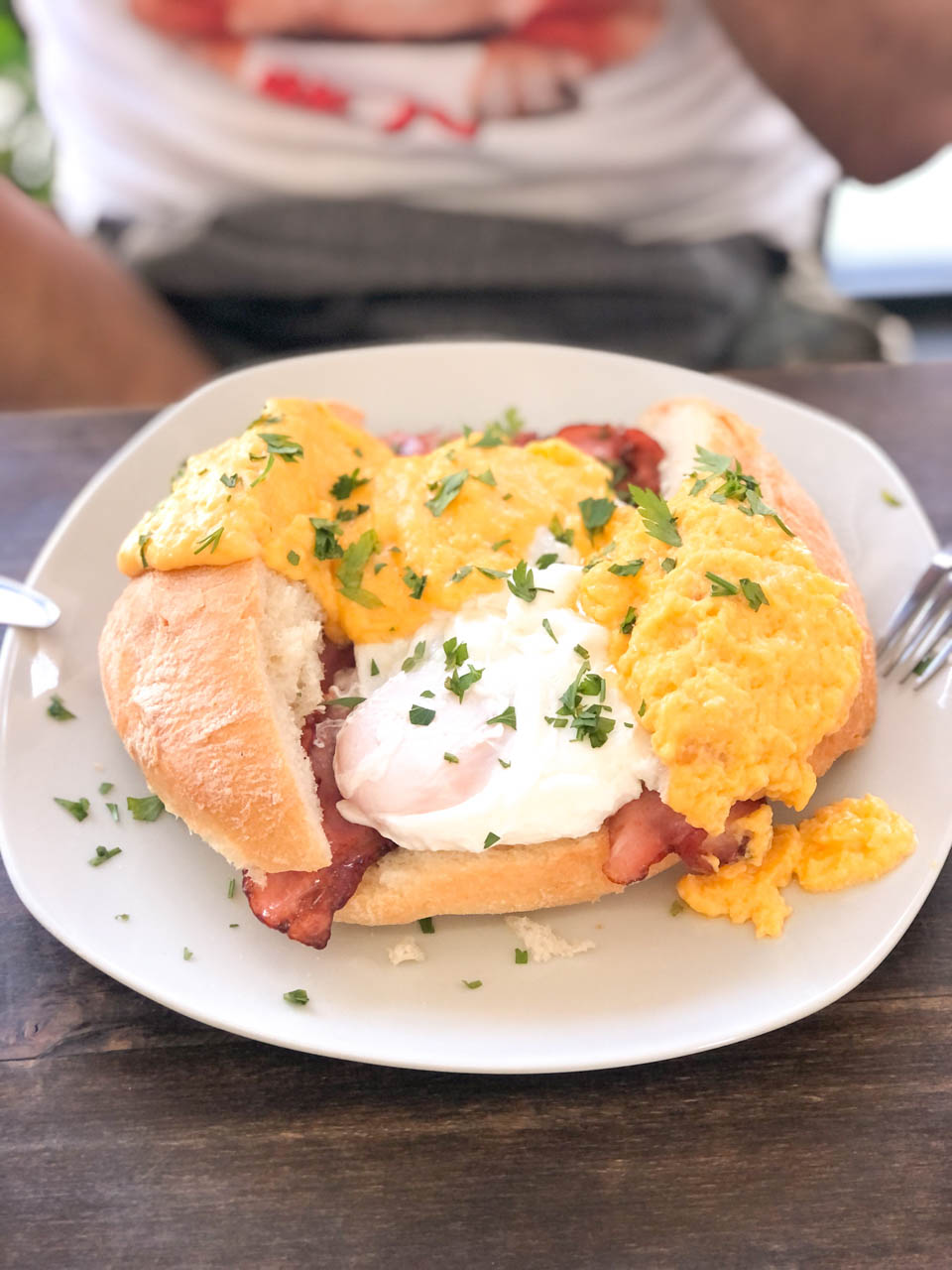
In addition to being a café, Public Room also serves as a creativity and innovation hub that hosts various events and workshops. They also have an amazing co-working space that remote workers can use free of charge. We happily took advantage of it on our last afternoon in the city. As it was my first time ever working from a public place rather than the comfort of my home all day long, I was a bit apprehensive about it. I must say, though – if working conditions were this comfortable everywhere, I could definitely see myself doing this more often!

Which of these places is your favourite? Would you add Skopje to your North Macedonia itinerary?

